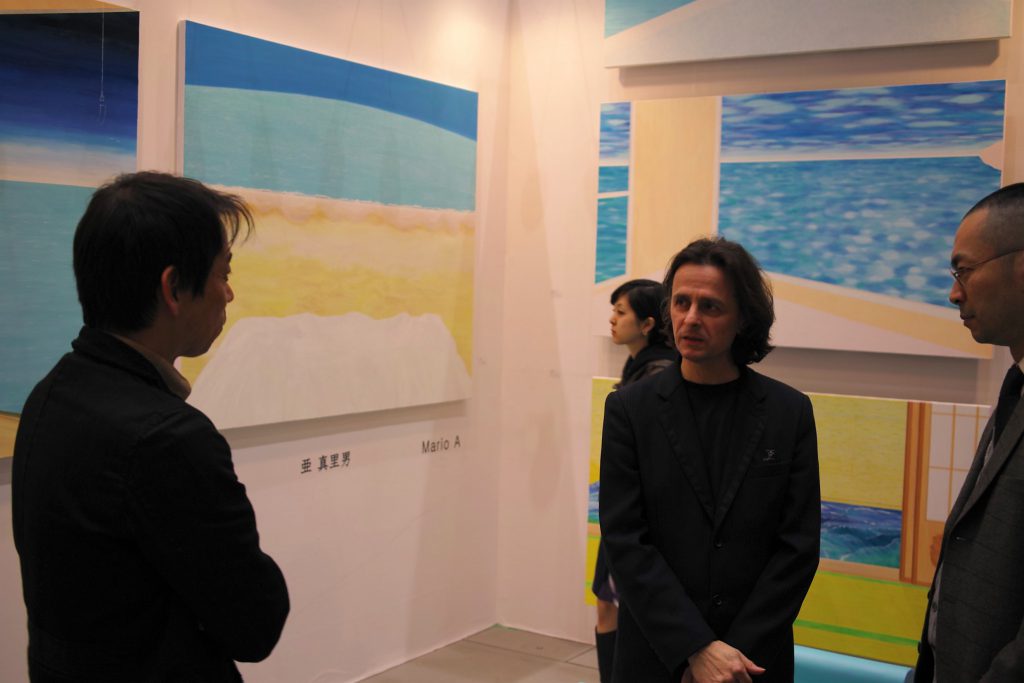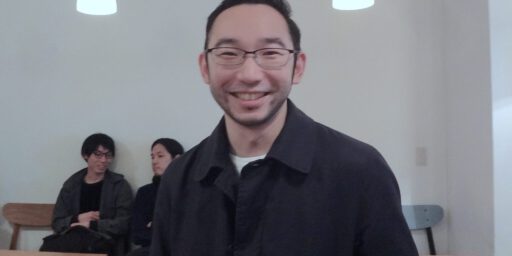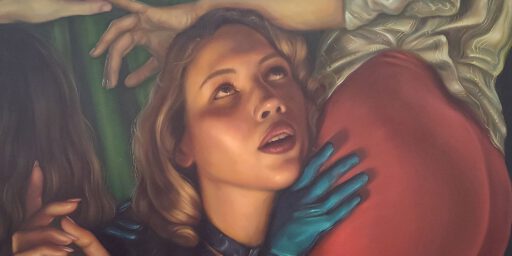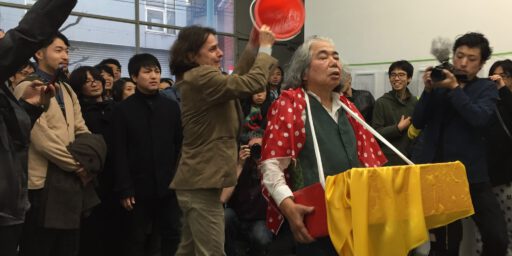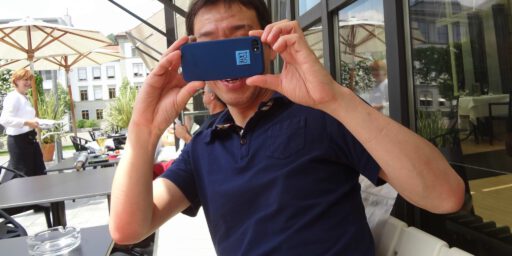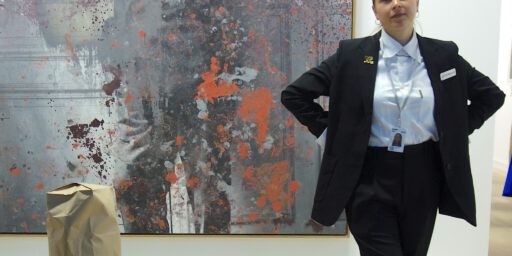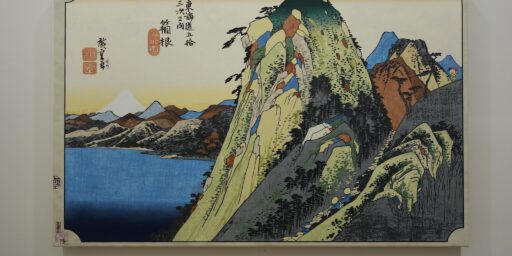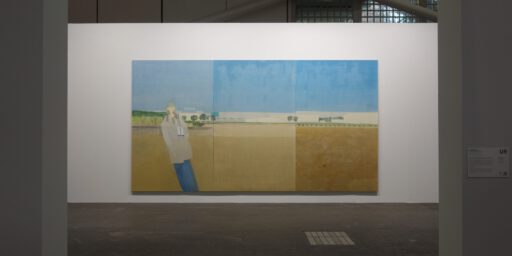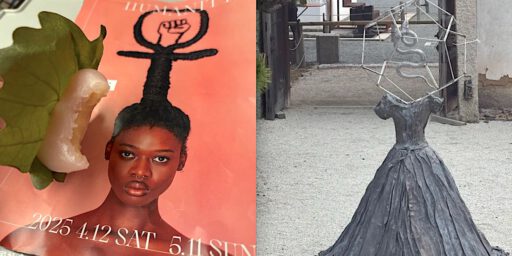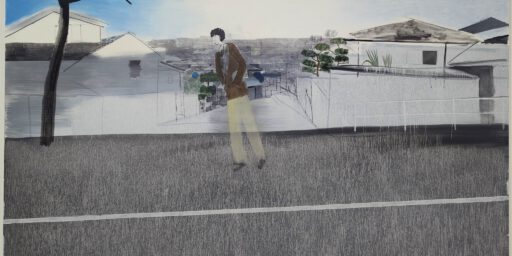エスプリ・アーティスティック* 小泉明郎、丹羽良徳、折元 立身、グスタフ・クリムト、名古屋 覚 Esprit Artistique* KOIZUMI Meiro, NIWA Yoshinori, ORIMOTO Tatsumi, Gustav Klimt, NAGOYA Satoru
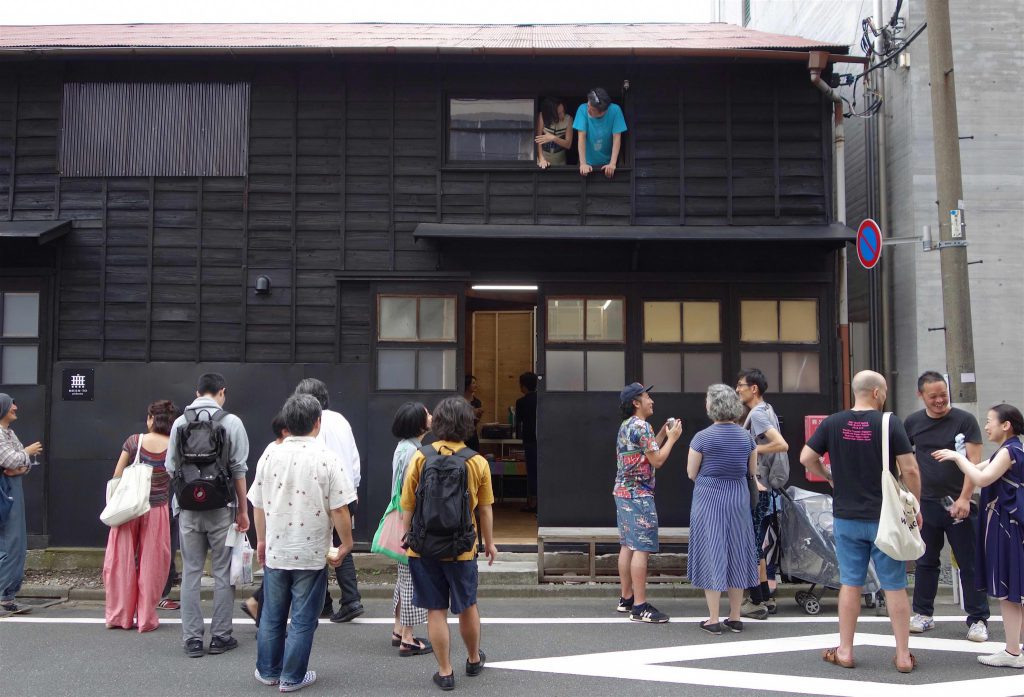
The art community gave its enthusiastic applause to the new space of the gallery Mujin-to Production 無人島プロダクション, which relocated to Sumida-ku, in the Eastern part of Tokyo. The old, cleverly transformed, wooden building itself transmits an exciting historical atmosphere, ready now to give stage to challenging art projects, progressive site-specific installations and cutting-edge exhibitions. Bravo!
I noticed that the three artists, whom I am introducing here, and the gallery owners are more or less intertwined, in this sense a zeitgeist phenomena which just happened accidentally. We should keep in mind, that in comparison to monster galleries like Gagosian, who’s owner is acting against law by neither displaying a price list in the gallery nor at his booth at Art Basel, these Tokyo galleries seriously create the vector in Japanese art, practice transparency by showing openly the art works’ price list. Every art dealer is being supported by a fine circle of collectors and curators, who preserve the entire art ecosystem in the Kanto region. In this regard, these entrepreneurs are successfully navigating through the obstacle of high rent in the city of Tokyo. Said that, of course, Tokyo’s art scene is much more broader, diversified and multifaceted.
The attached snap-shots I took at the three opening events hopefully invite you to check the websites of the related galleries, whereas the press release texts may spark interest and provide quick insights regarding the eclectic artistic gestures and intentions by these wonderful and amazing artists.
May I start with KOIZUMI Meiro’s 小泉明郎 who had been chosen by gallery owner FUJIKI Rika for the attention drawing, inaugural show, named “Dreamscapegoatfuck”. Three different body of works had been installed, – in a subtle manner we experience a stringent curatorial practice by the artist himself. For me, who served in the German army, I was intrigued to conceptualize a sort of augmented reality, recapitulating watching young Japanese (or U.S. , Iraq, Asian, Arab, or what so ever) kids as active video gamers. The thought-provoking, war/battle fields related, video installations imply traumatic sensitivity analysis; the images are rendered between violence and self-sacrifice. The eternal, or let’s say, the universal question comes in mind: for whom, for what should I give my life? Koizumi’s documentary characteristics were added with a highly necessary artistic approach through the sculptural work named “Sleeping Boy”. Art is not about rules, neither about truth. We are obliged to examine, what the real meaning of the statement by Koizumi who “had suffered with the image of his son’s death for a few years after his son was born.” is. His gesture had to de-coded by myself, as I happily met his wife at this opening again, three years after our ceremonial lunch in the context of the ‘Japanese Contemporary Art Transparency Prize 2017’. See the link:
https://jcatp.com/recipients/koizumi-meiro/
Since August 3rd, Japan experienced another chapter of censorship in the field of arts because of a shut-down exhibition, which included an art work made by South Korean artists remembering wartime sex slaves during Japan’s colonialism period. See the link.
Intention of censorship by Nagoya’s Mayor KAWAMURA Takashi at the Aichi Triennale 2019
名古屋河村市長 あいちトリエンナーレ 2019の「少女像」展示中止求める意向
https://art-culture.world/articles/intention-of-censorship-by-nagoyas-mayor-kawamura-takashi-at-the-aichi-triennale-2019/
This very crucial case of censorship is still pending, means, in the remaining weeks a lot can happen. For the better or for the worse in the context of Japanese contemporary art practice. I, myself, will try my best to get Japan being a country of free artistic expression, without fear and (self-) censorship.
Koizumi is also participating at the Aichi Triennale with the work “Prometheus Bound”. See the link:
https://aichitriennale.jp/en/artist/koizumi-meiro.html
Ironically, Koizumi, who had to practice self-censorship in the Museum of Contemporary Art Tokyo
(“MOT Annual 2016, Loose Lips Save Ships”「MOTアニュアル2016 キセイノセイキ」東京都現代美術館 consequently showing the censored work, together with the related body of work, at Mujin-to Production “伝説の「空気」展となる、小泉明郎 @ 無人島プロダクション” (2016/4/30) https://www.art-it.asia/u/sfztpm/WYIs6a2zp1AZiE5cn9eg/ ),
experienced four years ago similar pressure regarding the ’Korean sex slaves topic’ in South Korea. Let me quote the sentences, taken from “Our Feardom of Expression and Internalization of Censorship” 2016, page 69-70, written by artist OKUMURA Yuki, who ‘translated/re-edited’ the original Japanese text by Koizumi:
“When Koizumi’s ‘Oral History’ was to be exhibited at Seoul Museum of Art in 2015, the organizer asked him to remove some of the controversial sections, such as where the “mouth” voices some sort of hate speech and also mentions the term “comfort women” (Korean sex slaves). Even though it is clear that these remarks are purely the subjective views of random passerby, not of the artist, such “taboos” worry bureaucrats regardless of the context when it comes to museum exhibitions. Given that the exhibition was organized by Korea Foundation, Koizumi assumes they were being “considerate” not only about possible retaliation from Koreans, but also about the possible impact on diplomatic relations between Japan and Korea. In the end, Koizumi decided to mute the sound and apply black bars over subtitles in those scenes “as clear evidence that those parts had been cut out”.
http://www.torchpress.net/2016/08/22/book-ourfeardom-eg/
May I hereby politely interfere with a personal anecdote, as I experienced plenty of censorship in my artistic career; – by gallerists, by Japanese and South Korean publishers, by media crews, by Japanese newspaper journalists, by authorities in different countries like East Germany, USSR, China, South and North Korea. In the context of South Korea, among various stories, I can tell you, that authorities from the South Korean Embassy in West-Germany came to my exhibition and demanded to put down several pictures about KIM Dae-Jung (김대중 金 大中 who later became President of South Korea). Which I did not, of course.
As seen lately again, censorship in Asian countries is still the norm. Even in Japan. Artistic practice has to take so many hurdles in these Asian countries, that one wonders how the artists want to survive and stay true to themselves. Most of the gallery owners remain quiet, care mostly about art dealing, preoccupied about art fairs and auction houses, – speaking in abstract terms.
Finally I got the chance to meet Austria-based NIWA Yoshinori 丹羽良徳 in persona, whose works I could see on many occasions like in the Mori Art Museum “Roppongi Crossing 2013: OUT OF DOUBT” (“Tossing socialists in the air in Romania” 2010 + “Proposing to Hold Up Karl Marx to the Japanese Communist Party” 2013) or at Photo Tokyo with “Walk in the Opposite Direction of a Demonstration Parade” 2011.
Famous for his “blunt” counter-activism videos, in which we wonder how he persuaded his protagonists to act seriously in front of the camera, reminding us of the methods by “Borat” or “Bruno”. On the other hand, Niwa gives hint how history can be distorted by manipulating video footage. For his solo exhibition at Satoko Oe Contemporary he created a provoking, punch-like, video work (he calls it a fake documentary) “The Communities We Must Have Imagined” (2019), which will be up-dated until the Tokyo Olympics 2020. By calling a Tokyo-Olympic boycott for the athletes, we are remembered of the questionable Olympics Boycotts in Moscow 1980 and Los Angeles 1984. Niwa hereby succeeded in showing us that contemporary art is particularly effective at unpacking the present-day specter of “precarious situations”, by revealing complexity, ambiguity and conflicting emotions in a way that more traditional media often do not.
Obviously, as ART+CULTURE readers know, NIWA’s Boykott-Olympia work gives imaginative curatorial connection to KAZAMA Sachiko 風間サチコ, one of my favorite artists.
Just 3 1/2 months ago, extremely popular and successful KAZAMA had been handed over the prestigious “Tokyo Contemporary Art Award” by Tokyo Governor KOIKE Yuriko 小池 百合子.
中堅作家を次なるステージへ。Tokyo Contemporary Art Awardの長期的支援とは?
https://bijutsutecho.com/magazine/special/promotion/19778
For us art lovers, a rare, highly interesting notion of social commentary in REALPOLITIK, where we can get a big laugh! The Governor of Tokyo, with her mandate, is obliged to positively ‘represent’ the Tokyo Olympic 2020, – but as an irony of fate, she is promoting an artist who creates anti-Olympiad works, like the spectacular “Dislympia 2680” (2018).
優作「ディスリンピック2680」@ 風間サチコ展・「原爆の図 丸木美術館」
KAZAMA Sachiko’s Excellent “Dislympia 2680” @ Hiroshima Panels – Maruki Museum
https://art-culture.world/articles/kazama-sachiko-dislympia-2680-hiroshima-panels-maruki-museum/
Exquisite!
Regarded as an evolutionary process in the Japanese contemporary art world, let me also mention Kazama’s “disciple” young and emerging DOKUYAMA Bontaro 毒山 凡太朗, who is participating at the Aichi Triennale, too (see the link), and in no way inferior to her or Niwa’s artistic practices.
“Time goes by,
Dreaming future
, Synchronized Cherry Blossom”
https://aichitriennale.jp/en/artwork/S11.html
During Dokuyama’s last year’s solo exhibition “Public archive” at the gallery AOYAMA | MEGURO, he did let the visitors interact with the issue of “comfort women”, too. This April, invited by MOT (Museum of Contemporary Art Tokyo) curator YABUMAE Tomoko 藪前知子 at the gallery Gallery αM, in a highly cynical way, he created a new video work called “Innocent Tale of the sky” 2019. Because of the coming Olympics, Tokyo is under the siege of general contractors ゼネコン, famous for price-fixing agreements, and their cozy relationship with bureaucrats from the Tokyo government. See also:
東京オリンピック2020年:借金を増やす
Tokyo Olympics 2020: run up more into debts

https://art-culture.world/articles/tokyo-olympics-2020-run-up-more-into-debts/
Dokuyama’s video-work protagonist is continuously shouting in front of newly build skyscrapers: “still too much blue sky”. “You should construct the buildings much taller, higher, higher!”.
Very convincing! More at:
毒山 凡太朗の卓越したアート実践は日本の社会経済の歴史を深く考えさせる
Exceptional Artistic Practice By DOKUYAMA Bontaro Inspires Deep Thoughts On Japanese Socio-Economic History
https://art-culture.world/articles/dokuyama-bontaro-exceptional-artistic-practice-毒山-凡太朗/
Another body of work by NIWA Yoshinori shown in his actual exhibition relates to the historical speech by Prime Minister ABE Shinzo in Buenos Aires 2013, promoting the City of Tokyo, “after Fukushima 2011”, in front of the International Olympic Committee members with the famous sentence: “Let me assure you, the situation is under control”.
As the title already suggests “Forcing People to Speak About What They Don’t Understand” 「自分自身、意味を理解していないことを話してもらう」(2019, single channel video, 17 min 29 sec) Niwa emphasizes the question, if all these people, – PM Abe, the IOC members, the Japanese population, the whole world, – really understood what the speech was about.
up-date 2019/8/7
A timely interview from today with NIWA Yoshinori in Bijutsu-Techo BT web-magazine
黒塗りの映像が映し出すこの国の規制。丹羽良徳インタビュー|美術手帖
https://bijutsutecho.com/magazine/interview/20280
In comparison to Niwa’s video work, myself chose “The situation is under control” as the title of my exhibition in 2016, focusing not on the past, but the future of Japan’s society by showing, a.o., the German “ATOMKRAFT? NEIN DANKE” influence on Japanese anti-nuke movements and referring to the Olympics with the work “Gogh, Kiyoshiro & Me (Summertime Blues – Tokyo 2020)”.
https://marioa.com/works/gogh-kiyoshiro-me-summertime-blues-tokyo-2020-2/
In this sense, looking forward to a curator who is willing to put together all the above mentioned Tokyo-Olympics-related works for a mind-blowing show! よろしくお願いいたします。
Respected artist ORIMOTO Tatsumi 折元 立身, who in the last years created very strong museum and gallery exhibitions, offers always surprising performances, which was also the case this time at his gallery AOYAMA MEGURO.
Over 180 exhibition cards as documents of artistic practice. Numerous postcards with personal anecdotes and drawings sent to himself from London and Berlin, which perfectly resonate with his devoted audience. Offering profound world- and art-historical layers. Who will notice the cold-war context? Letting everybody know his home address. Who on earth would publicly do this nowadays? For art’s sake, the artist laid bare, even.
For the record
折元立身の再び、クールなJ concept:「step in」秀作 (2014年11月6日)
https://www.art-it.asia/u/sfztpm/Tq17JgrxahQEkoSHi6CW/
折元立身を巡る「動物とのパフォーマンス・アート」(1+2) (2015年9月10日)
https://www.art-it.asia/u/sfztpm/6x1sr2lRdyVfqzuU3EaO/
実は、画家になりたかった折元立身 @ 川崎市市民ミュージアム個展 (2016年7月1日)
https://www.art-it.asia/u/sfztpm/KzfYyD0XGatBqkrCZFjJ/
アートフェア東京のハイライツ:山下菊二、西野達、折元立身、柳幸典、マティスと安倍昭恵
ART FAIR TOKYO Highlights: YAMASHITA Kikuji, NISHI Tatsu, ORIMOTO Tatsumi, YANAGI Yukinori, Matisse and First Lady ABE Akie
https://art-culture.world/articles/art-fair-tokyo-highlights-yamashita-kikuji-nishi-tatsu-orimoto-tatsumi-yanagi-yukinori-matisse-and-first-lady-abe-akie/
All these different, in execution and concept, artistic practices stimulate exciting experiences, notions of contemplation, and have a connotation to the power/function/purpose of contemporary art. From case to case, art works will probably let the viewer feel uncomfortable as they are sometimes unfiltered, sometimes re-contextualizing an augmented reality, but always executed in an honest way. Hot, arty, full of art passion in these summer days in Japan. Blood is boiling, not only because of the temperature but of the censorship at the Aichi Triennale. However, our mind says, we should all stay calm, think about the consequences before we act. Checking beforehand, if any unwanted political agenda is being involved, if artworks are exploited for unrelated political missions.
Because once the mob gets started, it can’t be controlled anymore. Neither in Japan, neither in Korea, neither in China, Taiwan or Hong Kong.
After all, contemporary art is just a small part of the entertainment section in the newspaper, in the less read evening edition, only on Tuesday, of the Asahi Newspaper. Let’s not forget that art history proves that most artists created fucked-up works on purpose. To confuse, to trigger off questions. Not to solve the problems of the world. Relax and enjoy art.
Normally, it’s so quiet in Tokyo galleries.
Sssshhh ssshhhh
You’re all alone
Sssshhh ssshhhh
You fall in love
Zing boom
’Til it’s over and then
Sssshhh ssshhhh
It’s nice and quiet
Sssshhh ssshhhh
But soon again
Sssshhh ssshhhh
Starts another big riot
Therefore we love Tokyo’s art scene. Sssshhh ssshhhh….
Tokyo, Japanese Imperial Era Reiwa 1, exactly 74 years after the Hiroshima Atomic Bomb
Mario A
KOIZUMI Meiro 小泉明郎展「Dreamscapegoatfuck」
MUJIN-TO Production
20 July – 31 August 2019
Tue. – Sat. 12:00-19:00 | Sun. 12:00-17:00
Closed on mondays and public holidays (summer holidays 11-14 August)
5-10-5 Kotobashi, Sumida-ku, 130-0022 Tokyo
130-0022 東京都墨田区江東橋5-10-5
http://www.mujin-to.com
http://www.mujin-to.com/press/koizumi_2019_dreamscape_en.htm
PR by the gallery:
The exhibition consists of a video installation and a virtual reality video installation that will be on view for the first time in Japan and a sculpture work to connect these two video works.
The video installation Battlelands (2018) was created at the request of Pérez Art Museum Miami, USA. Koizumi visited Miami many times to produce this work. The film was shot with the help of seven United States veterans who served in the wars in Iraq and Afghanistan. Koizumi had them blindfolded, mounted bodycams on their heads, and asked them to verbally depict everyday life in the current homes and the cities where they live. And in the very same place, he asked them to recount the moment they felt most stressed at the battlefield. Koizumi edited these two types of images as a seamless mixture of images, which make the viewers feel as if the war is adjacent to their daily lives.
What influence does the ultimate state of war and destruction have on people’s memories and their daily lives? And what is the personal “choice” for soldiers in a situation that they must obey orders? How long the emotional battle will last? This work is the result of Koizumi’s attempt to battle against these questions, that are underlying the glamorous American Dream.
Paired with Battlelands is Sacrifice (2018), Koizumi’s first VR installation. Koizumi travelled to Baghdad to shoot this film after the completion of Battlelands. Ahmed, an Iraqi youth who cooperated with him, is in a position opposite to United States veterans, as his family was killed in the Iraq War. The viewer is virtually embedded in Ahmad’s body and listen to his experience while superimposing one’s body to his. The narrative begins with his childhood memories and invites the viewer through the day the war began, to the moment the family was killed in front of him, and eventually to the inescapable abyss of his trauma. What does the title, Sacrifice means for whom and for what? It will be an experience facing the limit of the notion of body against today’s remarkable advancement of technology.
(Sacrifice will be screened prior reservation. Please reserve the seat in advance. reserve seat)
Battlelands has been exhibited in Miami, London, Minneapolis, Madrid and Amsterdam, and Sacrifice has been presented in Seoul, Abu Dhabi and Amsterdam. This exhibition is the first time to exhibit these two works together. There is a contradiction that viewers experience the real tragedy of other human beings from a safe distance either in virtual space or on screen. Can one really imagine how much fear, hopelessness, and pain are involved when such tragedy actually occurs to oneself? The reality for somebody is always unreal for others. It is impossible to get close to the emotions of others, even if you try to cross the invisible wall that separates you from others by using imagination alone. Koizumi uses this impossibility as a starting point to create his art works. And the sculpture work Sleeping Boy (2015) plays an important role to connect these two installations that make the viewers to relive the reality of both the perpetrator and the victim.
Koizumi had suffered with the image of his son’s death for a few years after his son was born. When he became a father, the image of a dead son started to appear like a flashback in his head, and he became aware of the existence of paternal instincts, which is to protect the child regardless of being threatened by such nightmarish image. In order to deal with this anxiety, Koizumi made a sculptural work shaping his son’s head and limbs with clay by the side of his sleeping son.
Different from Battlelands and Sacrifice that deal with real experiences, his son’s death is a virtual image that appears in Koizumi’s mind. However, in Hollywood movies, in the press, and in the war testimonies, how many images of dead children, missing children, and injured children we see? Koizumi believes that the instincts of defending and those of fighting are inextricably linked, and the world is driven by those virtual images that haunt our unconsciousness.
By using visual media as a device to stimulate the empathy, Koizumi has been trying to visualize collective unconsciousness and desire behind the representation of the war. We would like to invite you to experience Koizumi’s new challenge in MUJIN-TO Production’s new space.
http://www.mujin-to.com/press/koizumi_2019_dreamscape_en.htm
このたび無人島プロダクションは、墨田区江東橋に移転後初の展覧会、小泉明郎展「Dreamscapegoatfuck」を開催いたします。
本展は日本で初のお披露目となる映像インスタレーション作品およびVR(ヴァーチャル・リアリティー)インスタレーション作品に加えて、1体の立体作品で構成されます。
映像インスタレーション「Battlelands」(2018年)は、アメリカ・マイアミにあるペレス美術館の依頼によって制作された作品で、この作品制作のために小泉は何度もマイアミを訪れ、イラク戦争とアフガニスタン戦争で従軍し帰還したアメリカの退役軍人7名の協力を得て撮影を行いました。まず彼ら/彼女らに目隠しをし、GoProカメラを頭に装着してもらい、現在の住居や暮らす街の中で日常生活を言葉で描写してもらいます。そしてまったく同じ場所で、今度は戦地で最もストレスを感じた瞬間を思い出してもらい、それを描写してもらいました。この2種類の映像を編集によって継ぎ目なく混在させた映像は、戦争が日常の地続きに感じるかのように鑑賞者に強く迫ります。
戦争と破壊という極限の状態は、人々の記憶やその後の日常生活にどのような影響を及ぼすのか、また命令に従う状況の兵士にとって個人的な「選択」とは何か、感情の中の戦いはどこまで続くのか。華やかなアメリカンドリームの裏に潜在するこれらの問いに、小泉が数年かけて取り組んだ作品です。
この「Battlelands」と対になるのが、小泉の初のVRインスタレーションとなる「Sacrifice」(2018年)です。小泉は「Battlelands」完成後、この作品制作のためにバグダッドに赴き、撮影を行いました。そこで協力してくれたイラク人の若者アハメッドは、アメリカの退役軍人とは逆の立場、すなわちイラク戦争で家族を殺され失った立場にあります。鑑賞者は、アハメッドのヴァーチャルな身体にもぐり込んで、彼の身体と自身の身体を重ね合わせながら彼の体験を聞くことになります。その語りは幼い頃の記憶から始まり、戦争が始まった日のこと、家族が目の前で殺された瞬間を経て、さらに逃れられない記憶の底へと鑑賞者を誘います。
タイトルにある「Sacrifice(犠牲)」とは、誰のための、そしてなんのための犠牲を意味するのか。テクノロジーの発展が著しい今日における私たちの身体性に対する、ひとつの限界に向き合うような体験になるでしょう。
(「Sacrifice」は事前予約優先の鑑賞となります。あらかじめご理解ください。予約はこちらから)
「Battlelands」はこれまでに、マイアミ、ロンドン、ミネアポリス、マドリッド、アムステルダムで、「Sacrifice」はソウル、アブダビ、アムステルダムで発表してきましたが、対となるこの2作品を同時に発表するのは本展が初となります。 ある一人の、生身の人間が語る現実を仮想空間内で、もしくはスクリーン上で安全な距離を保ちながら体験・鑑賞するという矛盾。彼らの体験が実際に自分の身に起こったとき、どれだけの恐怖と絶望と痛みの感情を伴うか。誰かにとっての現実も他者にとっては非現実であること。その間にある見えない壁を想像力だけで越えても、他者の感情に近づくことはできない。その不可能性を小泉は出発点とし、制作に取り組んできました。
そして、「加害者」「被害者」双方の現実の追体験を促す二つのインスタレーション作品をつなぎ合わせる重要な役目を担うのが、立体作品「Sleeping Boy」(2015年)です。 小泉は、息子が生まれてから数年間、息子の死のイメージが脳裏から離れず悩まされた時期がありました。本作は、そのころに制作されています。親になって初めて見ることになった、フラッシュバックのように現れる息子の死のイメージをどうしても振りはらうことができない小泉は、その悪夢のようなイメージに脅迫されながら子供を守っているのだという父性本能の存在に気づかされます。その思いを具現化するように、寝ている息子の傍で頭や手足を粘土で形作り彫刻作品を制作しました。
「息子の死」は、現実の体験を扱った先記二つのインスタレーション作品とは違い、あくまで小泉の脳裏に現れた仮想です。しかし、ハリウッド映画においても、報道や戦争証言においても、死んだ子供や姿を消してしまった子供のイメージ、傷ついた子供のイメージがいかに多いことか。守る本能と戦闘本能は表裏一体にあり、私たちの無意識に取り憑いたこの仮想イメージによって、世界は突き動かされていると作家は考えます。
共感や感情移入を促す装置としての映像メディアを使い、戦争の表象における集団的無意識と欲望を作品化してきた小泉の新たなる挑戦を、ここ、新しい無人島プロダクションの空間でぜひ体験していただきたいと思います。
http://www.mujin-to.com/press/koizumi_2019_dreamscape.htm
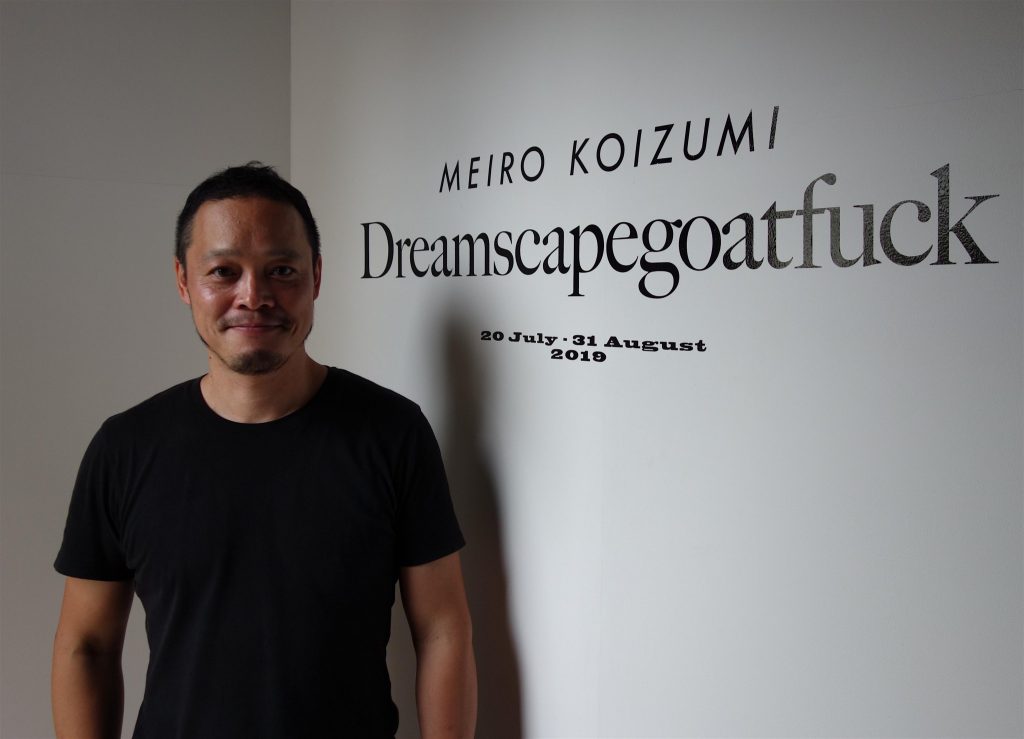
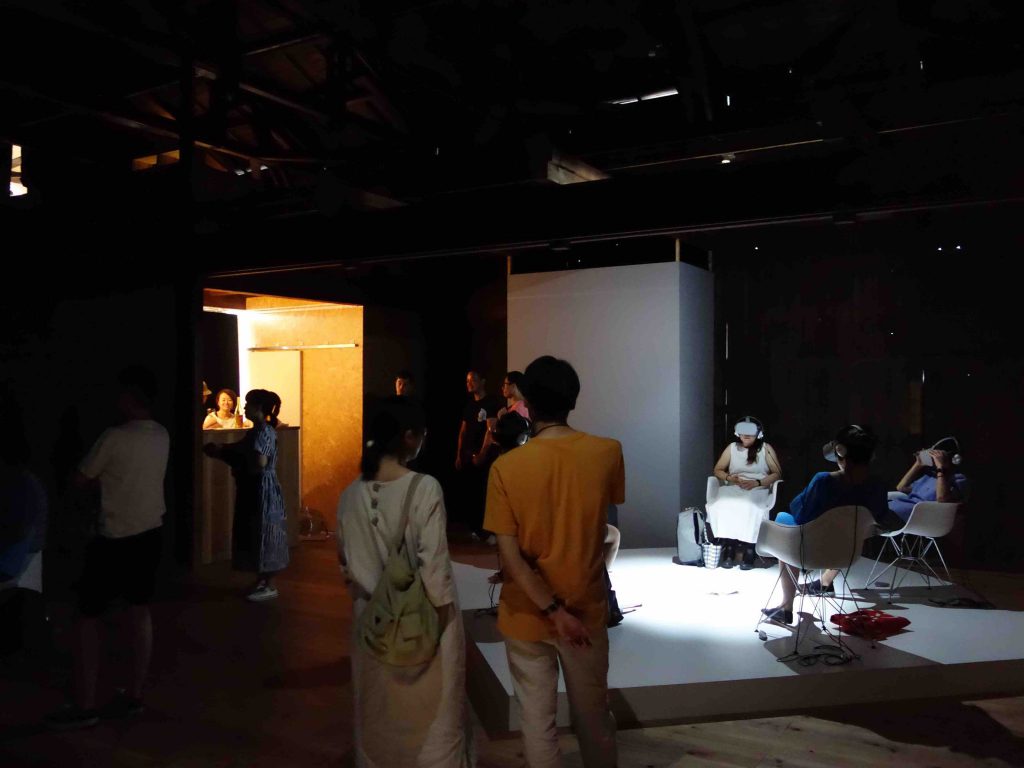
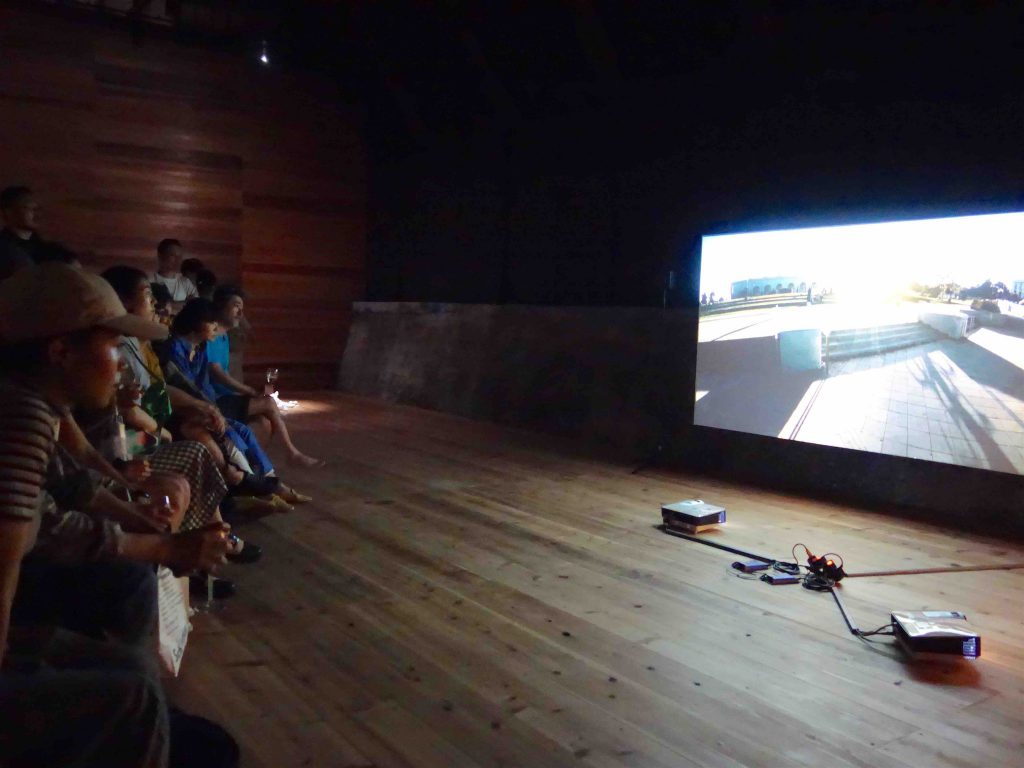

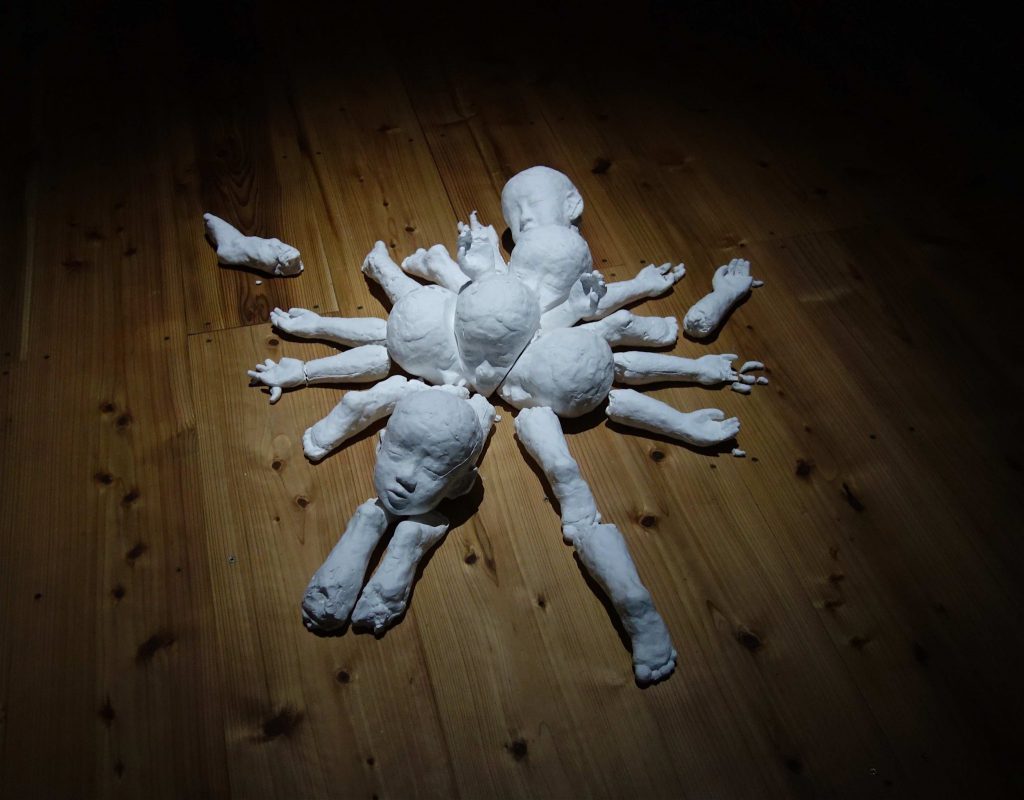

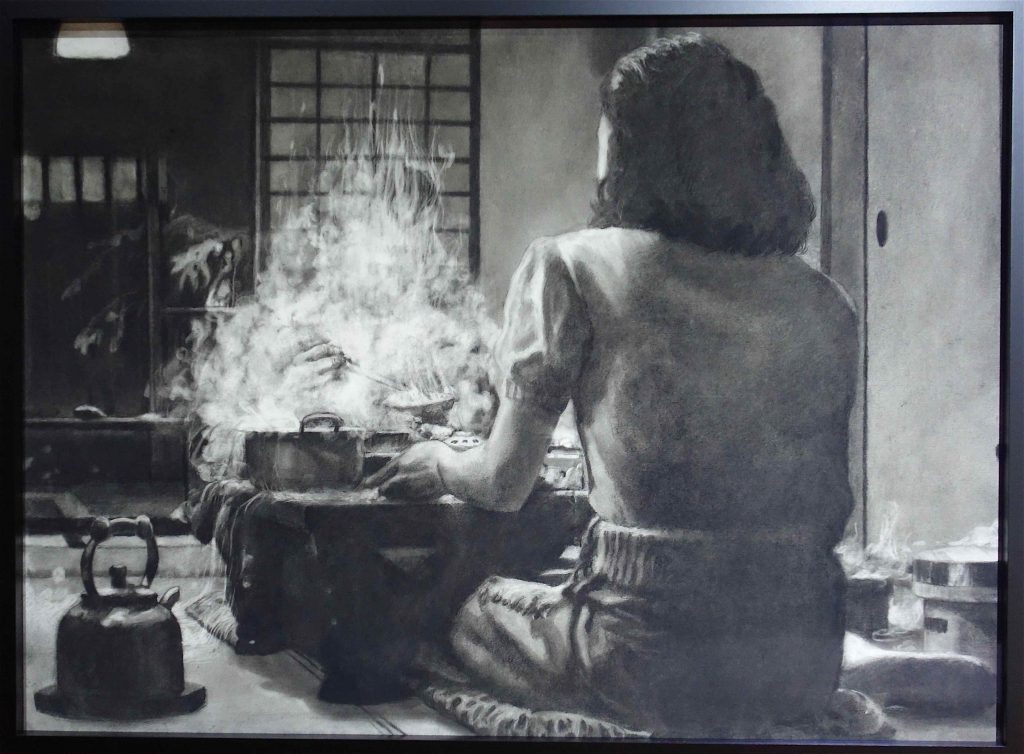
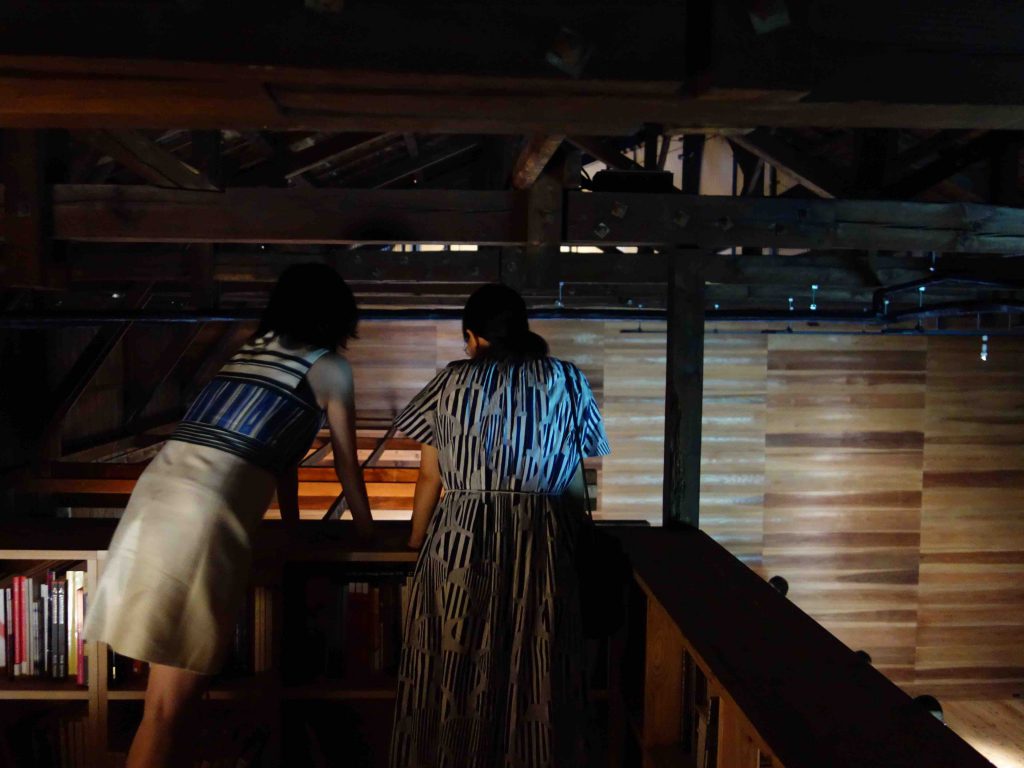
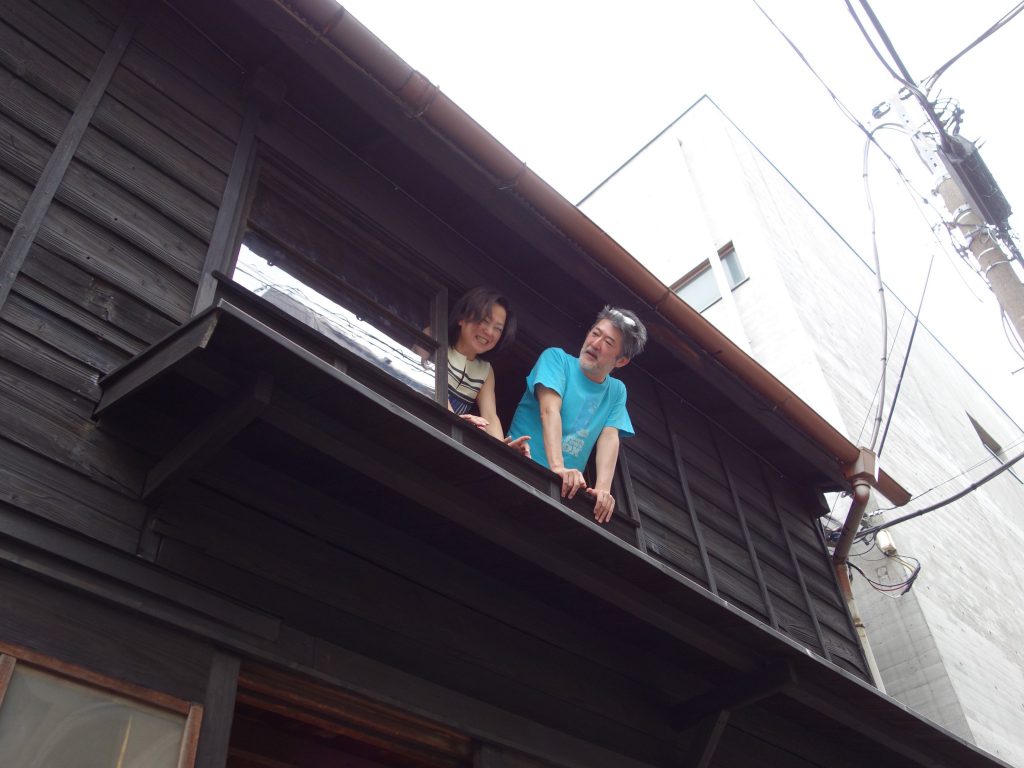
Yoshinori NIWA “The Communities We Must Have Imagined”
S.O.C. Satoko Oe Contemporary
24 July – 9 Aug, 2019
25 Aug – 6 Sep, 2019
Opening hours: Mon.- Fri. 12.00-19.00
Sat. & Sun. 12.00-17.00
東京都江東区白河3−18−8 第二杉田ビル1階
1F, 3-18-8 Shirakawa, Koto, Tokyo 135-0021
http://satokooe.com
We are pleased to announce the solo show of Yosninori NIWA (b.1982) “The Communities We Must Have Imagined” from July 24.
It is said that people are motivated by their emotions and by money, but the specific mechanisms involved are greatly influenced by values imprinted on each individual during the process of growth. Until just recently, it was widely accepted that video was a tool for capturing reality and conveying the truth, but advances in technology have swiftly undermined this assumption. However, people retain an undeniable desire to believe that the moving image is, in fact, reality. Nowadays, there is scarcely a news or media outlet free from sources and information that have been altered, fabricated, and disseminated in line with the broadcaster’s interests, but a world where we must doubt the veracity of everything we see, hear, and read only exhausts its inhabitants. It has come to seem that the problems caused by this “fake news” are not limited to societal chaos and political manipulation by those in power, but may even lead to collapse of “reason,” on which the survival of human civilization depends.
When photographic technology was imported from Europe to Japan, as the country opened to the world at the end of the Edo Period (1603-1868), people reacted in various ways. Those astounded by this unfamiliar technology believed all sorts of things, and there were widespread unfounded rumors that the photographic subject’s soul would be sucked out, or his or her hands would grow larger. The latter is evidently the reason that in many extant photographs from this era, people have their hands drawn inside their sleeves. Today this just seems like a joke, but it also shows how people seek to protect the rationality of the world they know by devising explanations of unfamiliar technologies, and how encounters with these new technologies create opportunities for thought. However, in contemporary society, people are so accustomed to new technologies appearing one after another that they have lost this ability to use their wits. This exhibition reconsiders fake news, a contemporary problem intrinsic to the moving image, from a critical standpoint, and explores its psychological effects.
Many of Niwa Yoshinori’s works take the form of social interventions spanning diverse media, including performance, film, installations, and projects that progress during the exhibition. The clearly stated titles of works are slogan-like and self-explanatory, and in most cases, the entire process of carrying out unproductive and meaningless actions in public spaces is documented on film. By exposing various disturbances generated in the course of putting the work’s title into practice, the artist has revealed the boundaries and limitations of the “public” concept in numerous projects in Japan and abroad. In 2016 Niwa moved his base of operations to the Austrian capital of Vienna, and has been focusing on the social functions of visual media. The current exhibition deals with the Tokyo Olympics approaching in 2020, and comprises a group of works centered on a fake documentary Niwa is producing from 2017 until just before the Olympics. The premise is that “The Communities We Must Have Imagined”
The work turns its attention to the Games’ enthusiastic welcome from the business community, based on the dramatic postwar economic growth that accompanied, or coincided with, the 1964 Tokyo Olympics. However, after a series of historic national crises, the radioactive contamination from the Fukushima nuclear meltdown, and immigration-related issues accompanying internationalization, it is clear that Japan’s situation has changed since then. In this project, Niwa edits together film addressing the Olympics from various perspectives, including interviews with athletes and team managers in the context of the 2020 Tokyo Olympics, archival footage of the 1964 Games, and political speeches by Prime Minister Abe, to create a fictional future documentary with a premise that nobody believes possible: a boycott of all events by Japanese athletes. By creating discrepancies between the video’s overall narrative content and statements made by those appearing in it, the work provokes thought on what ideologies are linked to the future we expect or hope for, what generates this future, and whether it truly reflects the future we anticipated, while re-examining the modern history of postwar Japan thus far.
丹羽良徳個展「想像したはずの共同体」
S.O.C. Satoko Oe Contemporary
前期:2019年7月24日(水)〜 8月9日(金)
後期:2019年8月25日(日)〜 9月6日(金)
開廊時間:月〜金:12.00-19.00
土・日:12.00-17.00
会期中無休
東京都江東区白河3−18−8 第二杉田ビル1階
http://satokooe.com
ウィーン在住のアーティスト、丹羽良徳(b.1982)の個展を開催致します。
人は、感情と金銭で動くと言われていますが、そのメカニズムの背景にはおのおのの成長過程で刷り込まれた価値観が大きく影響しています。つい先日までの常識では、映像は真実を写す道具として世界で認識されていたものが、テクノロジーの発達によってあっさり崩されました。しかしながら、人はどこかその映像そのものが真実であると信じたい『欲望』をどこかに感じているのも確かです。今日では、およそあらゆるニュースやメディアに流されるソースや情報が配信者の意思に沿って改変され、捏造され、拡散されつつありますが、あらゆる情報が偽物であると疑わないといけない世界は人を疲弊させるだけです。このようにフェイクニュースがもたらす問題は、現実社会における混乱の発生、権力者による政治利用の他にも、人間が生活を営む上で重要となる「理性」を破壊するのではないかという危惧すら感じつつあります。
例えば、写真技術が開国の流れと共に欧州から幕末の江戸時代にもたらされた時の人々は様々な反応をしました。未知の技術に驚いた人々は本当に様々なことを考え、根拠もなく「魂が抜き取られる」「手が大きくなる」と考える人も多く、事実残された写真を見てみると手を裾の中に入れて写っている写真が多いのは、これが原因だと言われています。今聞くと笑いばなしにしかならないような話ですが、未知の技術に説明を施すことで人間の理性を守ろうとするため、未知のテクノロジーとの出会いは人々に「考える機会」を与えました。しかしながら、現代社会では次から次へと登場する新しい技術に慣れてしまった現代人には既にこのように機智に考えることができなくなってしまいました。この展覧会は、映像メディアに内在する現代的課題であるフェイクニュースを批評的に捉え直し、これらの問題が人に及ぼす心理的影響を考察するものです。
多くの丹羽良徳の作品は、パフォーマンス、映像、インスタレーション、さらには展覧会期間中に進行するプロジェクトを含むあらゆるメディアを横断した社会介入行為の形式を取ります。明示される作品タイトルはスローガン的で自己説明的で、そしてほとんどの場合は非生産的で無意味な行動を公共空間で実現する過程の一部始終を映像記録に収め、明示されたタイトル内容を実行する過程で生まれるさまざまな軋轢をさらすことにより、制度化された公共概念の外縁を描くプロジェクトを国内外で多く実現します。また、丹羽良徳は2016年に活動拠点をオーストリアの首都ウィーンに移し、映像メディアが与える社会的な機能の側面に注目してきました。この展覧会は、2020年に迫る東京オリンピックを背景に、丹羽が2017年から2020年のオリンピック直前まで制作し続けるオリンピック開催を巡るフェイクドキュンタリーを中心とした作品群「想像したはずの共同体」の展覧会企画です。
作品は、戦後64年の東京オリンピックに重ね日本が歩んだ経済成長に重ね経済界からは熱烈に歓迎されたことに立ち戻ります。しかしながら、歴史上の国家的危機や福島の災害による放射能汚染、国際化における移民問題などの経験を経て、もはや日本はかつてのような状況ではないことは明らかです。このプロジェクトでは、2020年東京オリンピックを舞台として各国のオリンピック選手、監督へのインタビューや1964年に開催された東京オリンピック当時の記録映像、安倍首相の政治演説などオリンピックをめぐる様々な立場や、時代が異なる言説をつなぎ合わせ、2020年東京オリンピックの全種目において、誰もが実際には起こるとは思えない日本人選手のボイコットという設定の未来のフィクションドキュメンタリー映像です。映像全体のストーリーと、登場人物の発言内容が相違する状況を創作することによって、我々が予測または欲望している未来像はどのような思想と結びつき、どこから生まれるか、それは自分が希望する未来がそのまま予測する未来像として反映されるものなのかを考えると同時に、我々日本が歩んだ戦後近代史を改めて考え直します。
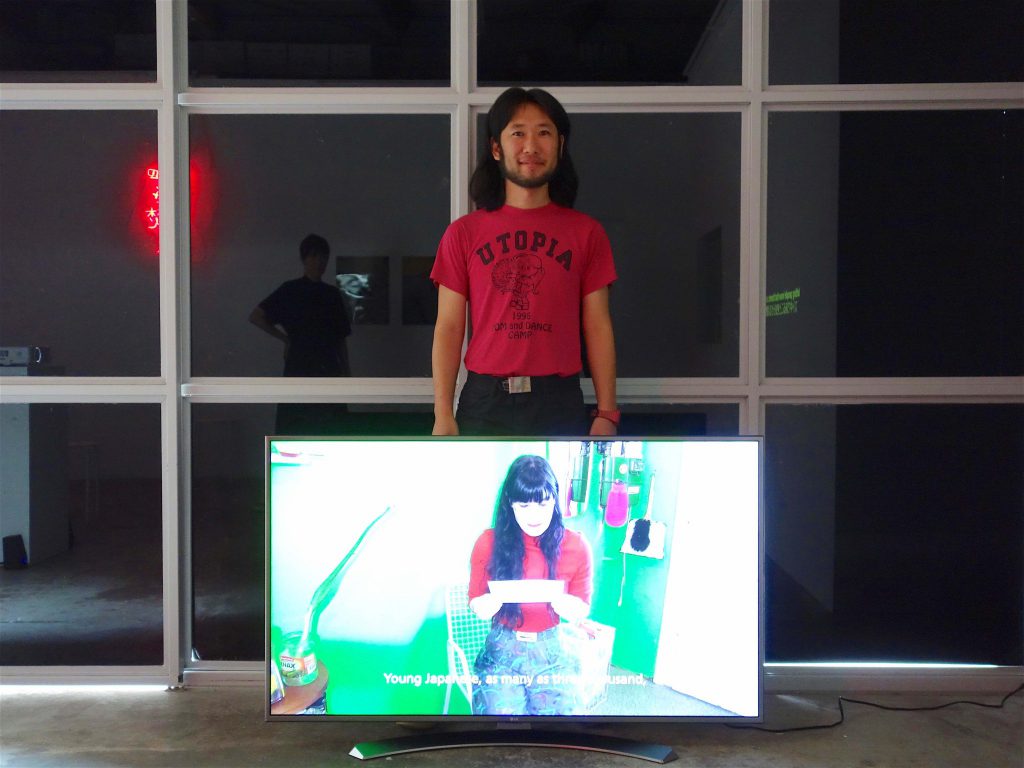

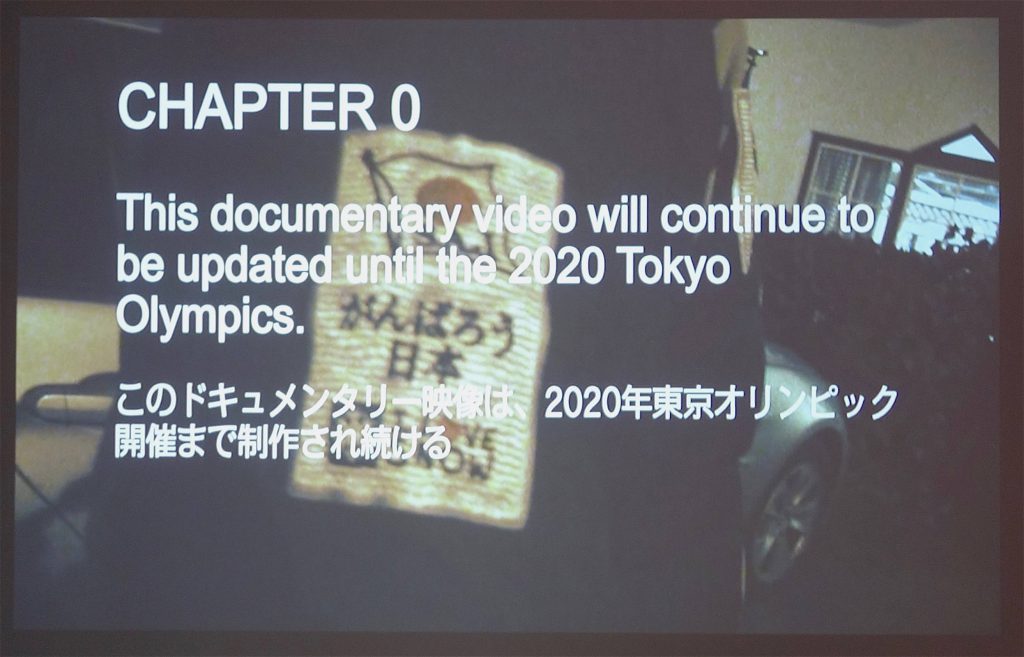
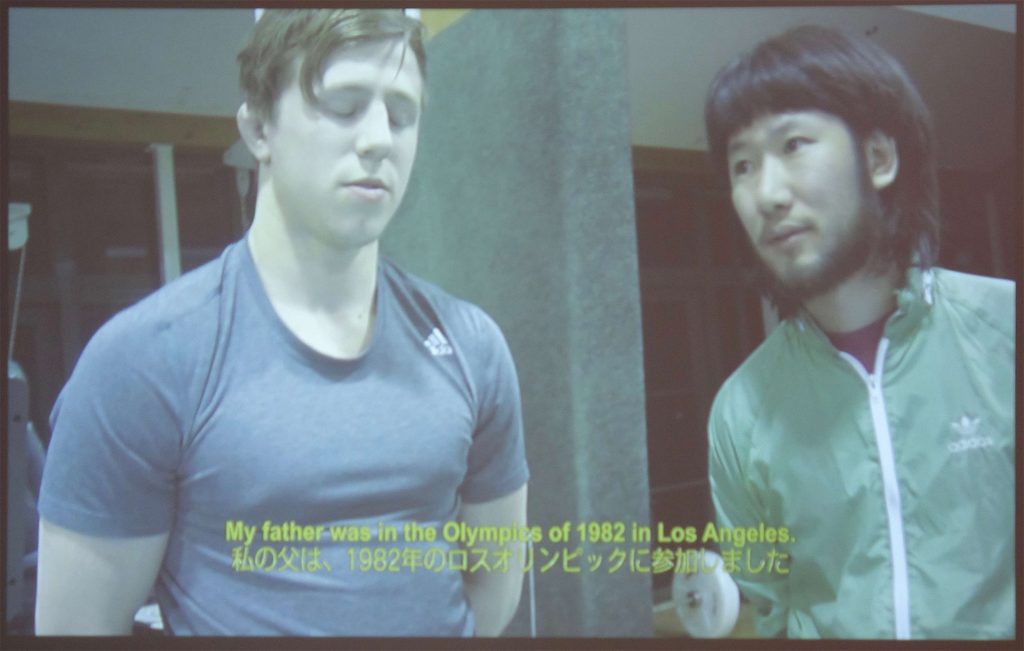
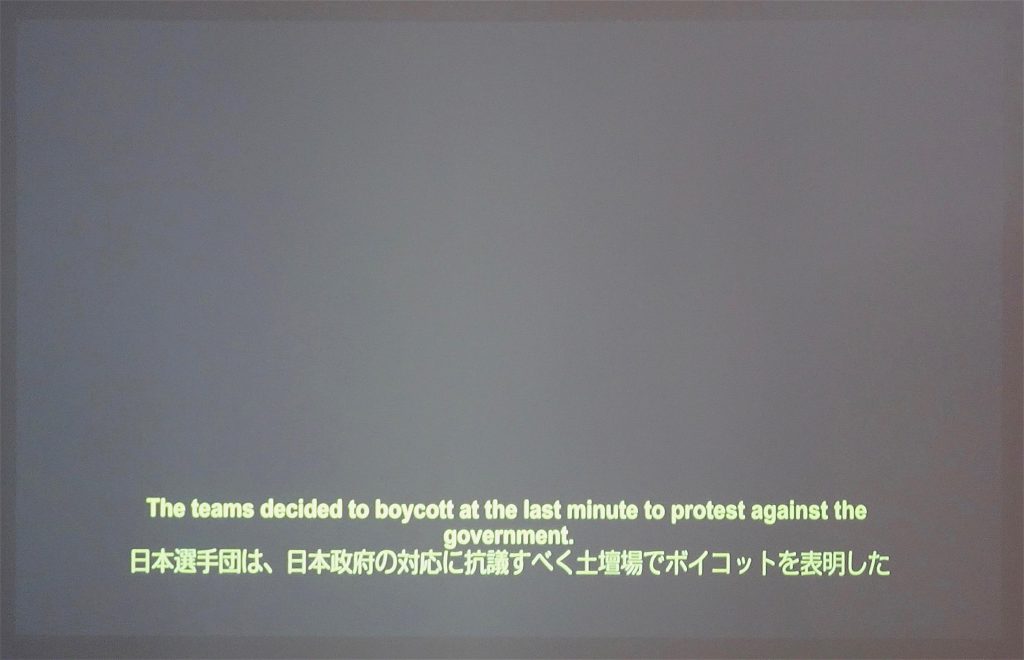


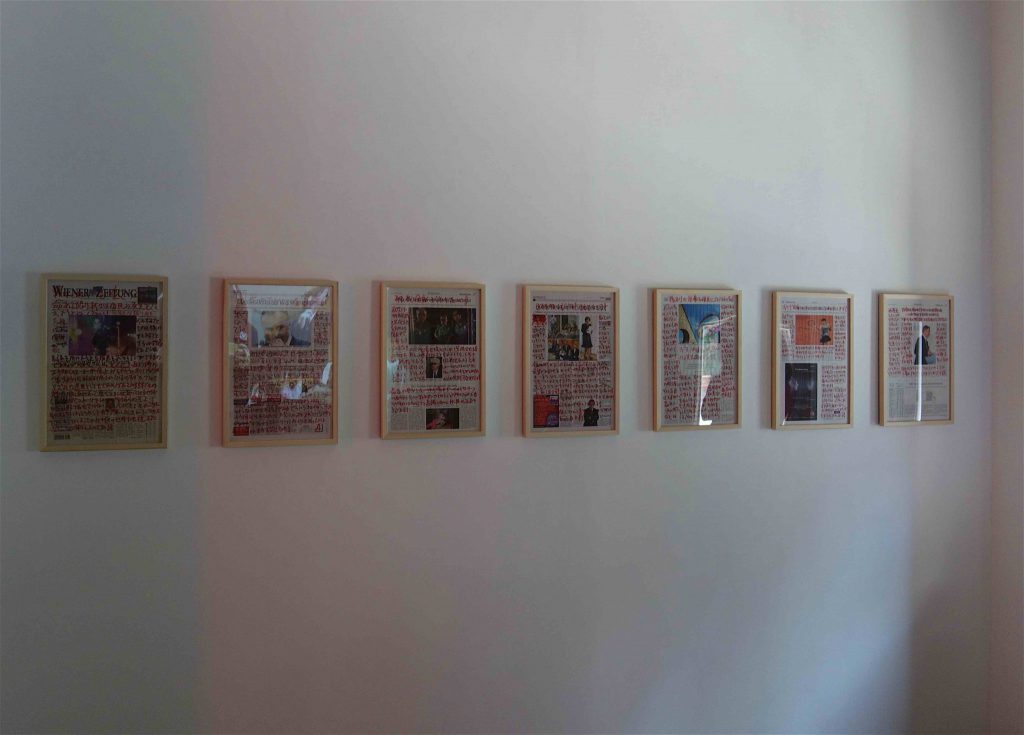
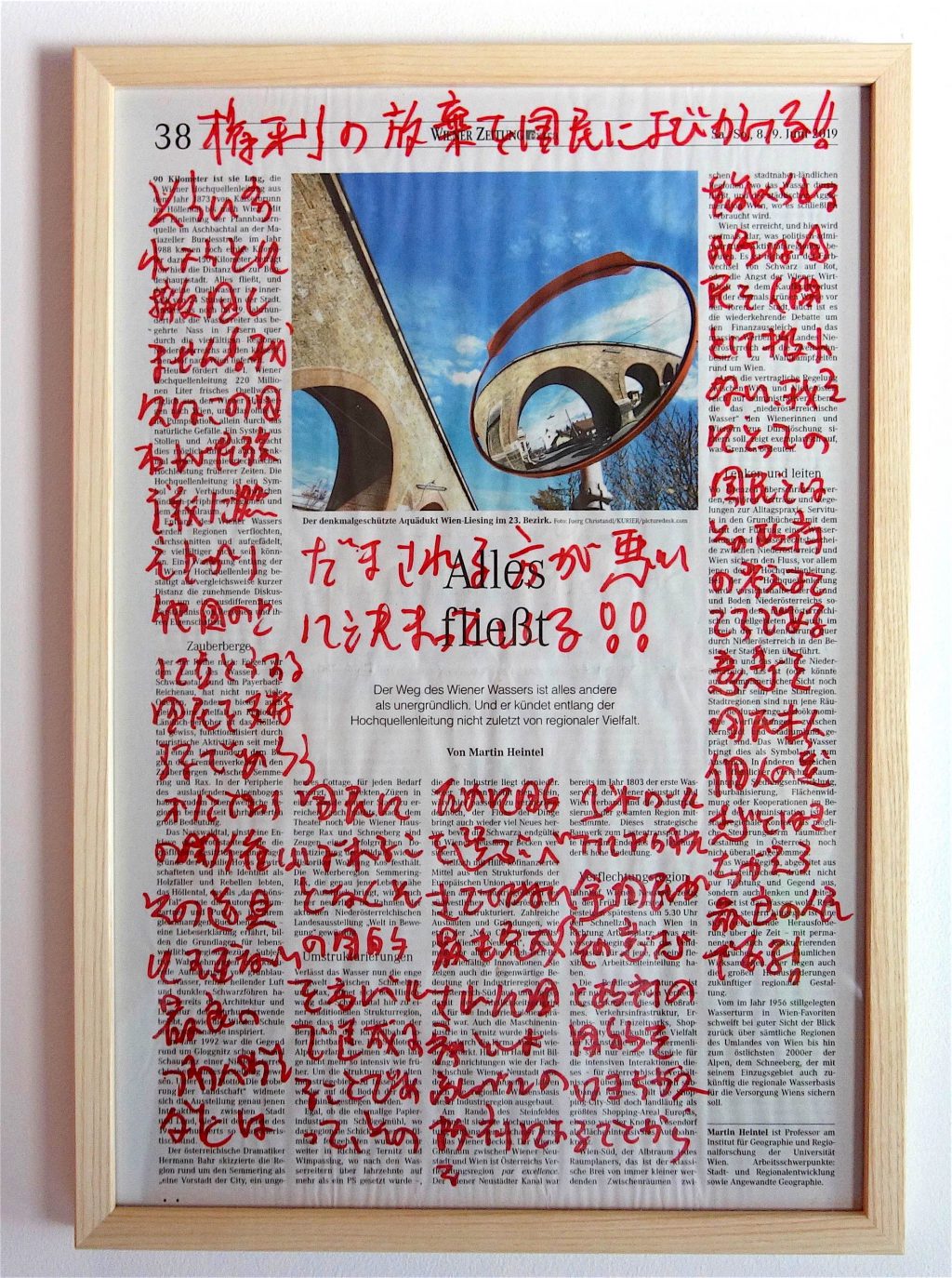
折元 立身 Tatsumi Orimoto:Postcard Drawings and Postcards as Documents
青山|目黒 AOYAMA | MEGURO
July 6 – Aug 18 2019
Thu. and Fri. 12:00-19:00
Sat., Sun. and Public Holidays. 12:00-18:00
closed on Mon., Tue., and Wed.
2-30-6 Kami-Meguro, Meguro-ku, 153-0051 Tokyo
153-0051 東京都目黒区上目黒 2-30-6
http://aoyamameguro.com
We are pleased to announce that we will hold the 5th solo exhibition of the artist Tatsumi Orimoto (born 1946) who has been based in his birthplace Kawasaki City, and has been actively working internationally.
The last year’s solo exhibition “Past & Now” at Onomichi City Museum of Art was an attempt to showcase the entirety of the artist’s activities up to the present by classifying them into six categories.
Orimoto is known for his representative works such as “Bread Man” in which he wrapped loaves of bread around his head, “Art Mama,” a collaborative work with his mother Odai, and “Grandmother’s Lunch” project in which he invited a lot of elderly people to have a lunch together; however, in this exhibition, two series of old and new mail art projects that have not been shown comprehensively, will be exhibited.
The first is a mail art series in which he created a drawing with a message on a postcard that he got while traveling and sent it to people close to him. His innocent drawing and intimate message on his journey stages a meeting event with its receiver. On this occasion, recent postcard drawings that were sent to his late mother from Berlin and London will be exhibited.
Another series is the postcards as documents of his many artistic performances and actions. After these temporary activities, Orimoto has produced printed materials such as posters and leaflets for the record, and delivered them by himself to his acquaintances. In particular, during the 1980s, the early period of his career when printing costs were expensive, Orimoto produced postcards to document his activities. These small-sized postcards contain the information and related figures that can tell us much about his past artistic activities. In this exhibition, the entire collection of these postcards (approx. 180 works) will be exhibited through catalogues which contain their real-size images and actual pieces.
A notable characteristic of Tatsumi Orimoto’s art is that he employs and maximally utilizes the long-established, simple and familiar communication system that has been shared by many people in the world as material of his expression: postcard, a small support medium; a mailbox, a small architecture in a public space; and a mail delivery system running across the planet.
Please do not miss this opportunity to see this unknown series which will be exhibited for the first time.
http://aoyamameguro.com/en/artists/tatsumi-orimoto-postcard-drawings-and-postcards-as-documents/
この度、川崎出身/在住で国際的な活動を展開する美術家、折元立身(b.1946)の弊廊では5回目の個展を開催しますのでご案内差し上げます。
昨年の尾道市立美術館での個展「Past & Now」は作家の現在までの活動を大きく6つのシリーズとして分類し構成したものでした。
バゲットで顔を覆い尽くした「パン人間」や、お母様である男代さんとの共同作業である「アート・ママ」、大勢のお年寄りにお集まりいただいて一緒に昼食を摂る「おばあちゃんのランチ」などの代表的シリーズで知られている折元ですが、今展ではこれまでに集中して紹介されることのなかった新旧2つのハガキのシリーズを発表します。
1つは旅先で入手した絵ハガキに絵手紙を描き、親しい人々へ送るメールアートのシリーズです。ぶっきら棒な図と旅先での日々について語りかけるような言葉はそれ自体が受け手との対面のイベントです。今回はこのシリーズの中から、近作のベルリンとロンドンから亡きお母様へ投函した絵葉書のシリーズを発表します。
もう1つのシリーズは一時的なパフォーマンスやアクションの多い折元ですが、その儚い行為の事後に記録としてポスターやチラシなどの印刷物を制作して現在も自ら知人へ届けています。特に活動初期、印刷費用の高価だった80年代はそれらをポストカードとして制作していました。そこには小型のハガキ大ながら、必要な情報と図が記されていて、活動を今も伝えるのに充分な内容が留められています。今回はこれらのカード全作品(約180点)を実寸大でまとめた冊子と展示でご紹介します。
葉書という小さな支持体、郵便ポストと言う公共建築と空間、そして地球上を駆け巡っているその配送の仕組み、この古くからある多くの人類共有の簡単で身近な形式を素材として最大限に活かし使いこなしているのもオリモトタツミの大きな特徴です。
どうぞこの機会に初公開のシリーズをご覧ください。
http://aoyamameguro.com/artists/tatsumi-orimoto-postcard-drawings-and-postcards-as-documents/
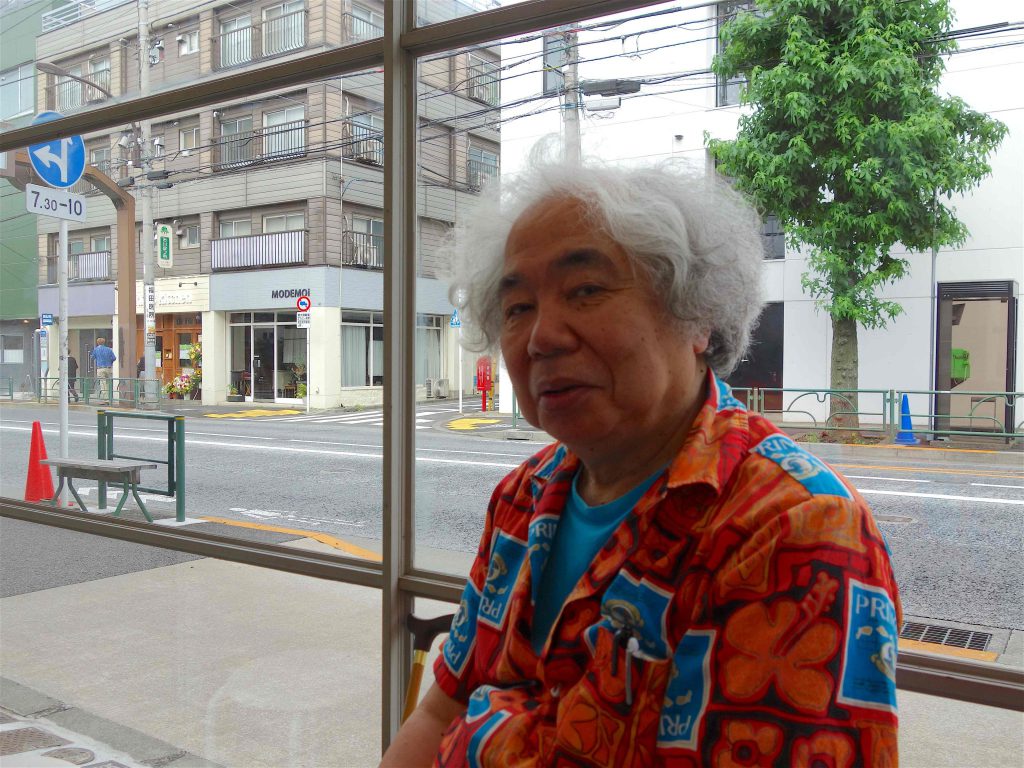
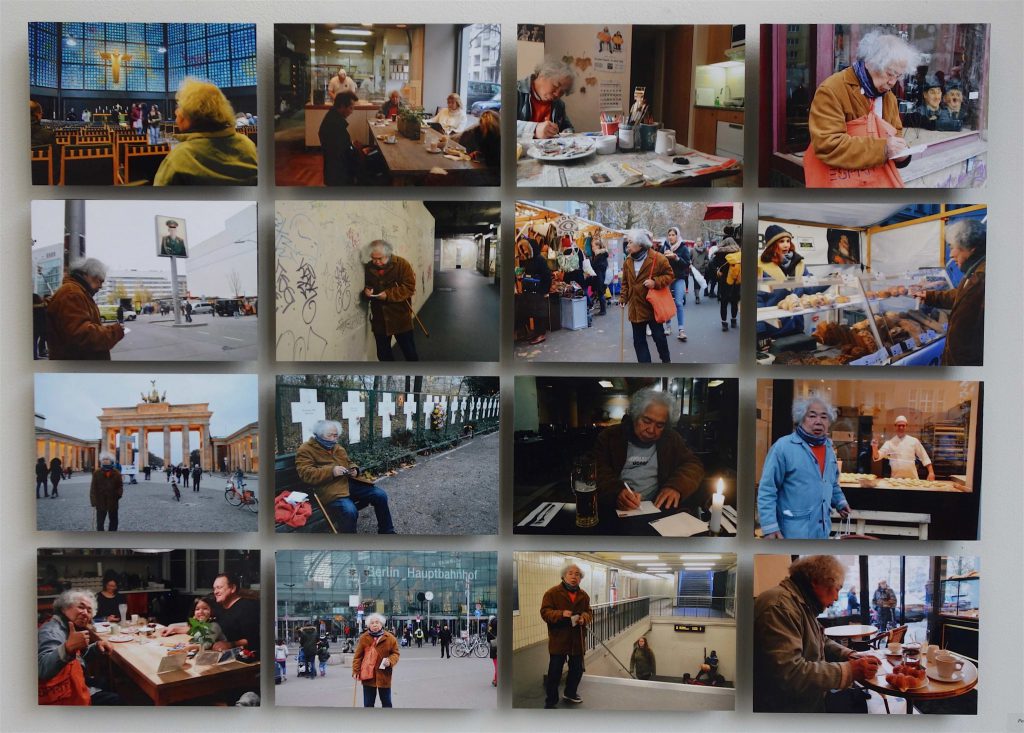

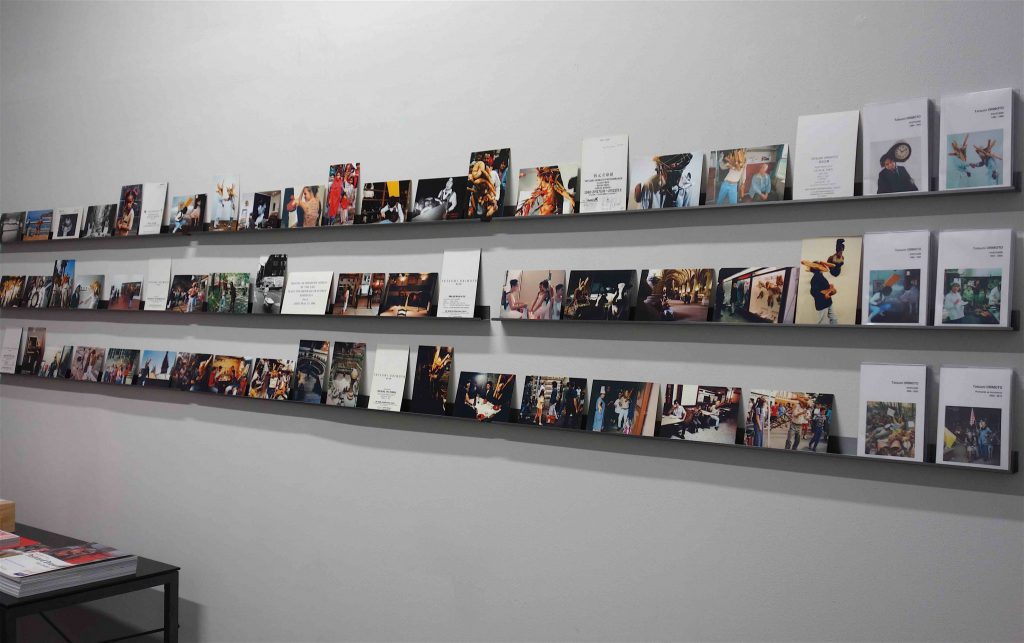
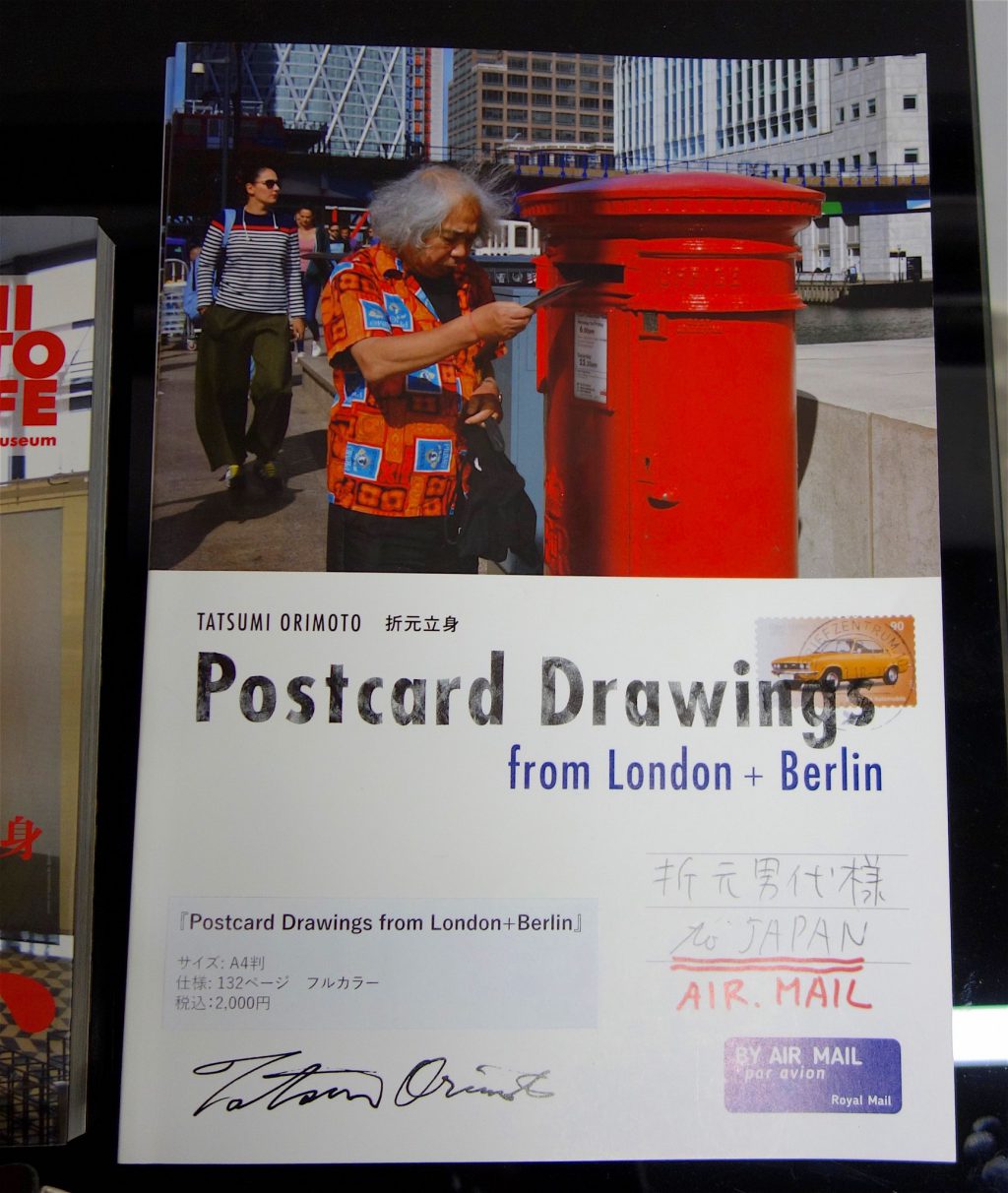

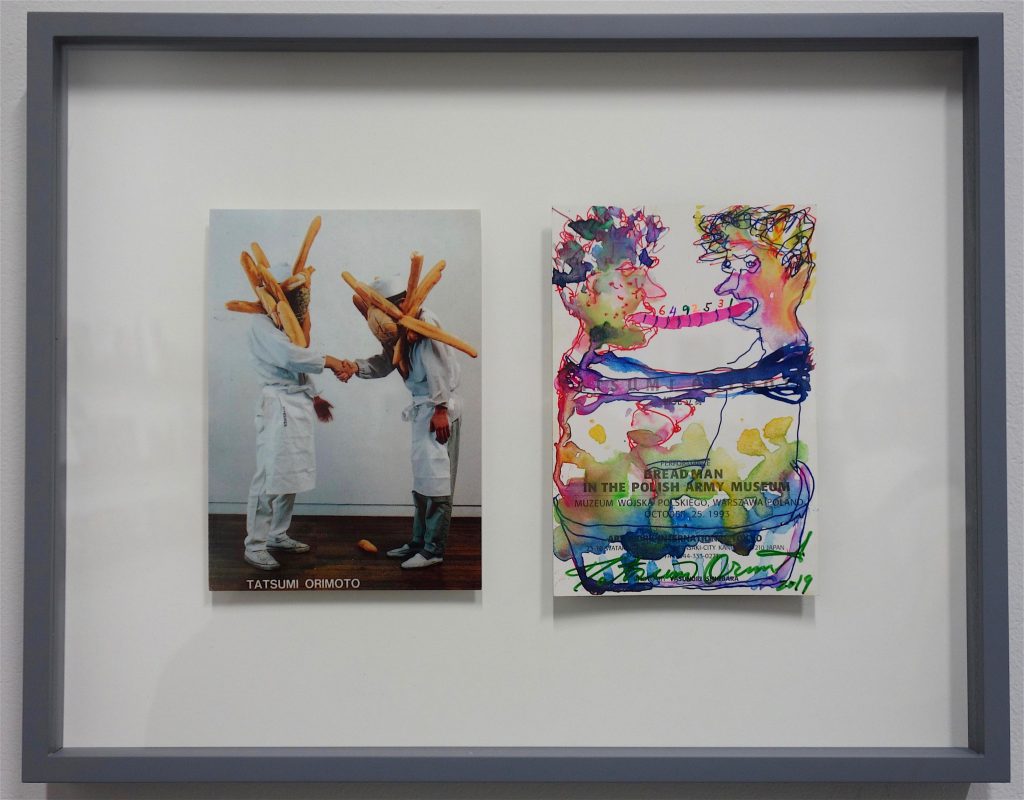

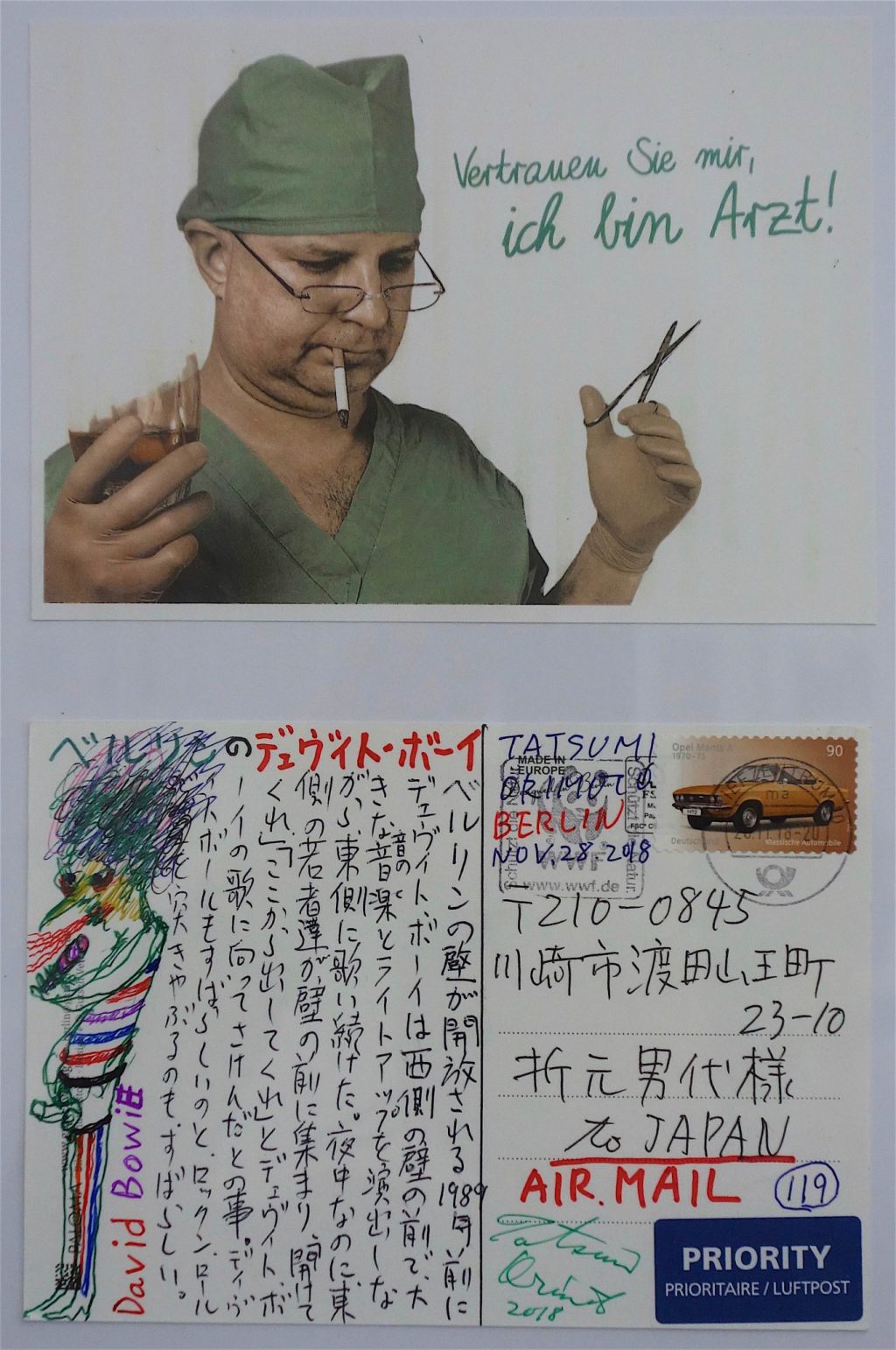
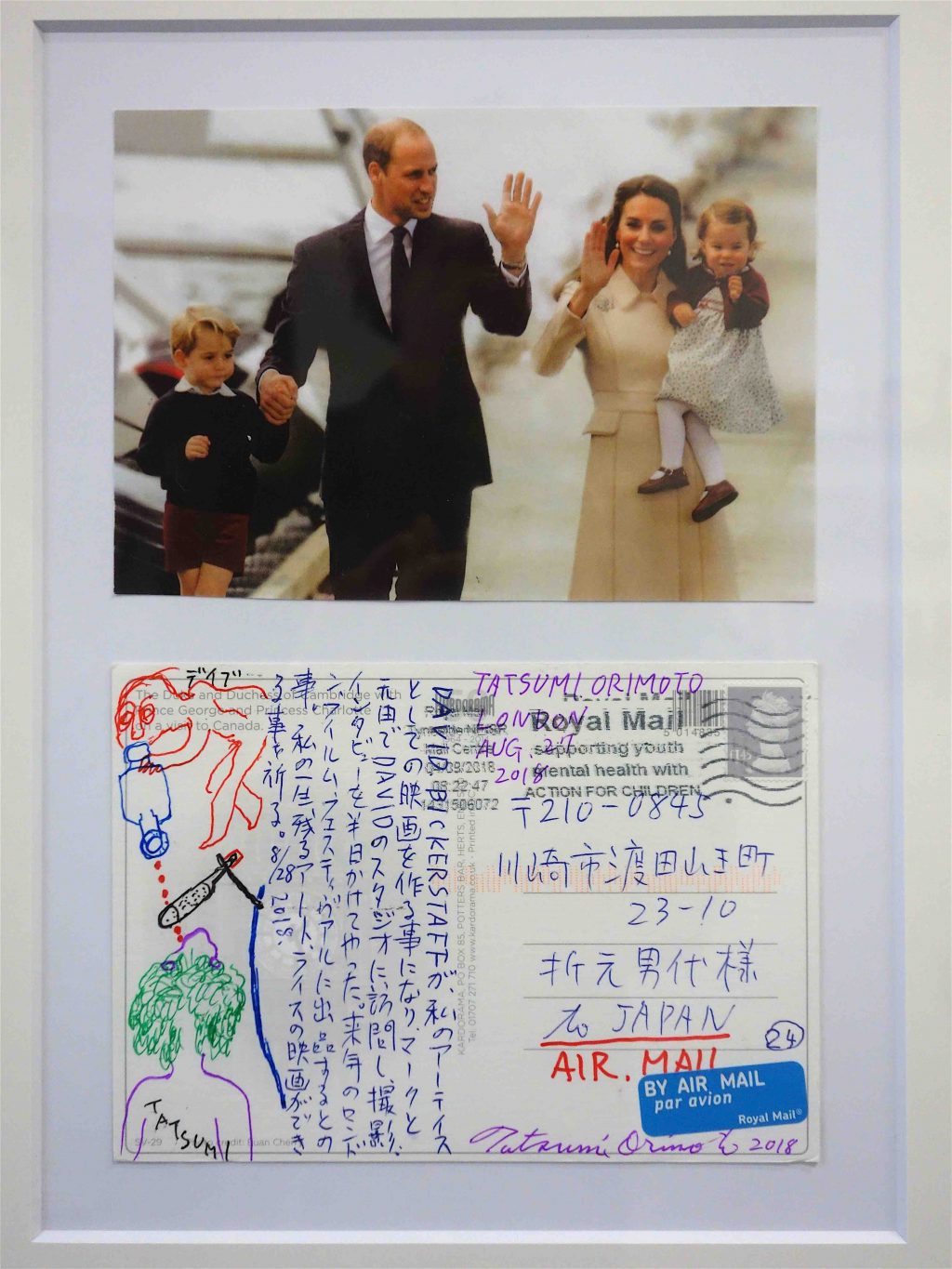
今日のおまけ today’s bonus
、会期73日間の入場者数は57万7828人-577.828-visitors-in-Tokyo-for-the-KLIMT-exhibition-during-73-days-1024x1155.jpg)
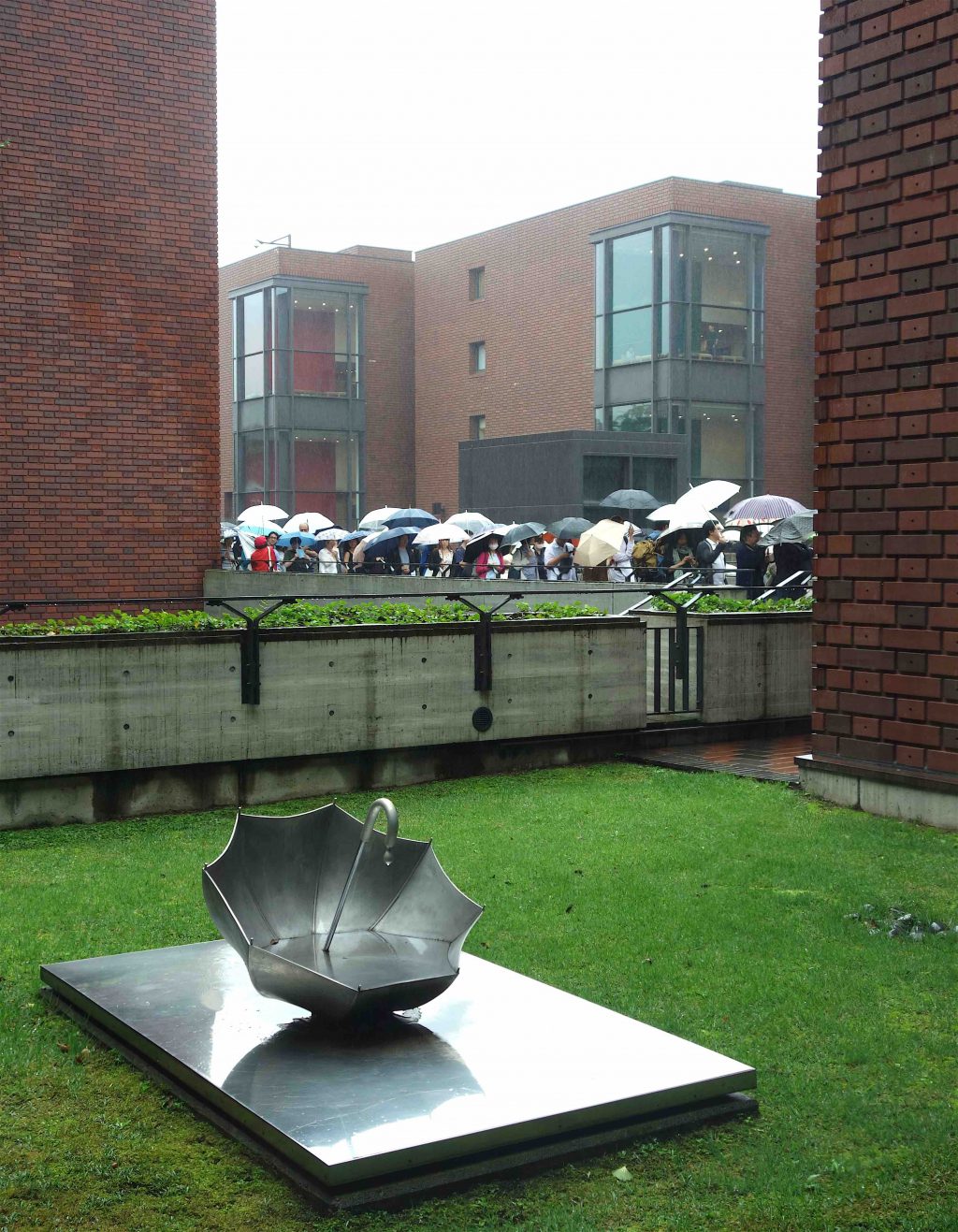
https://www.museum.toyota.aichi.jp/exhibition/klimt/
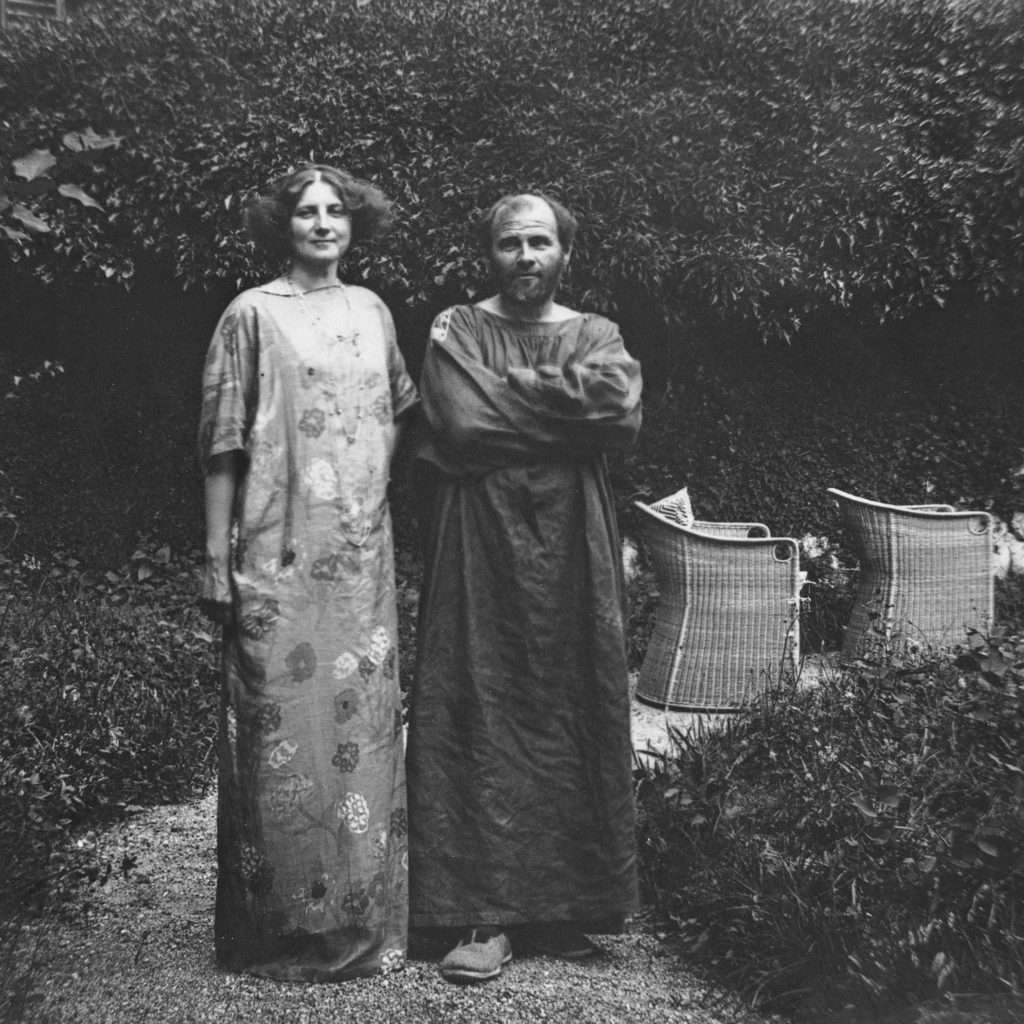
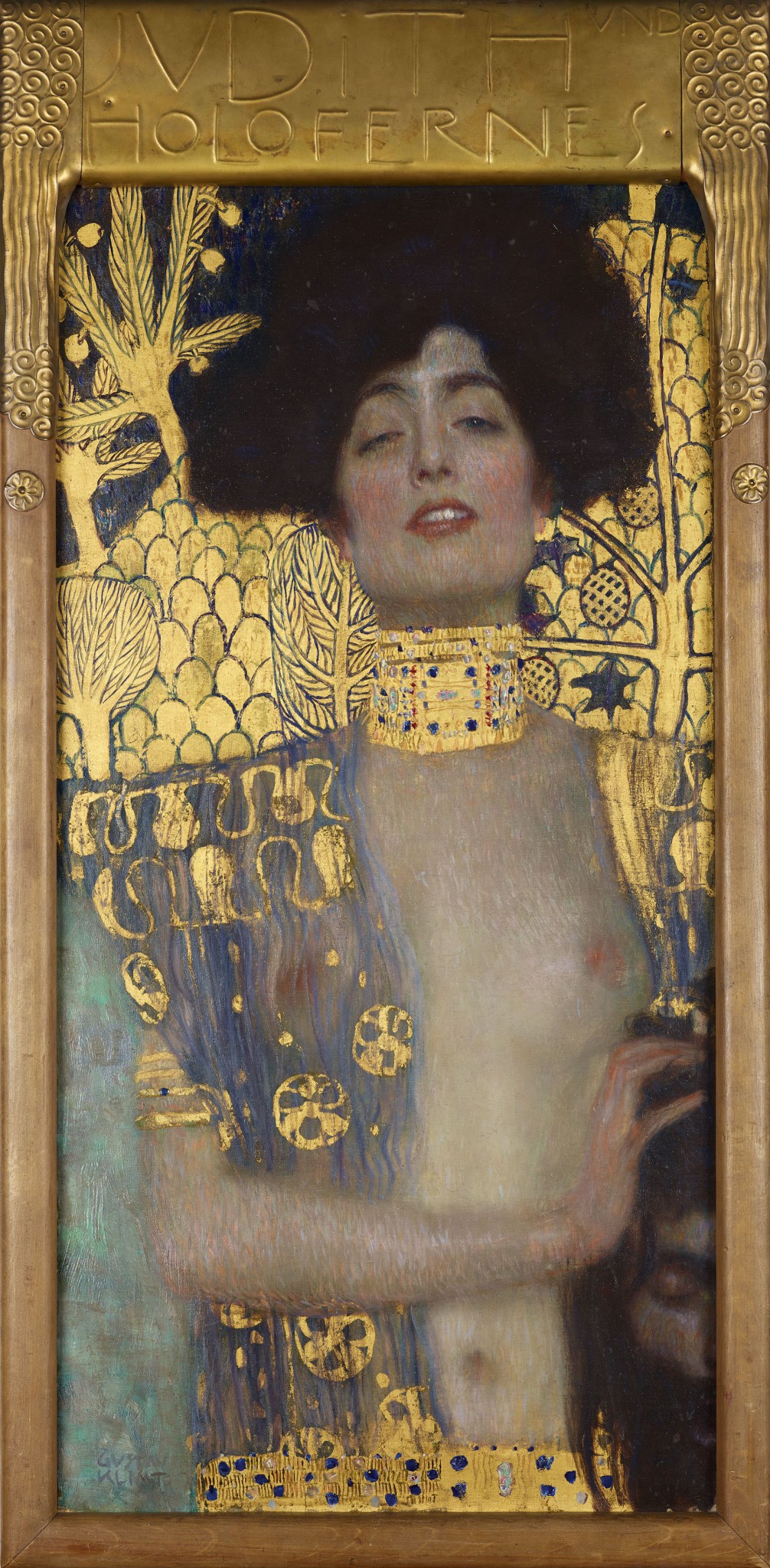

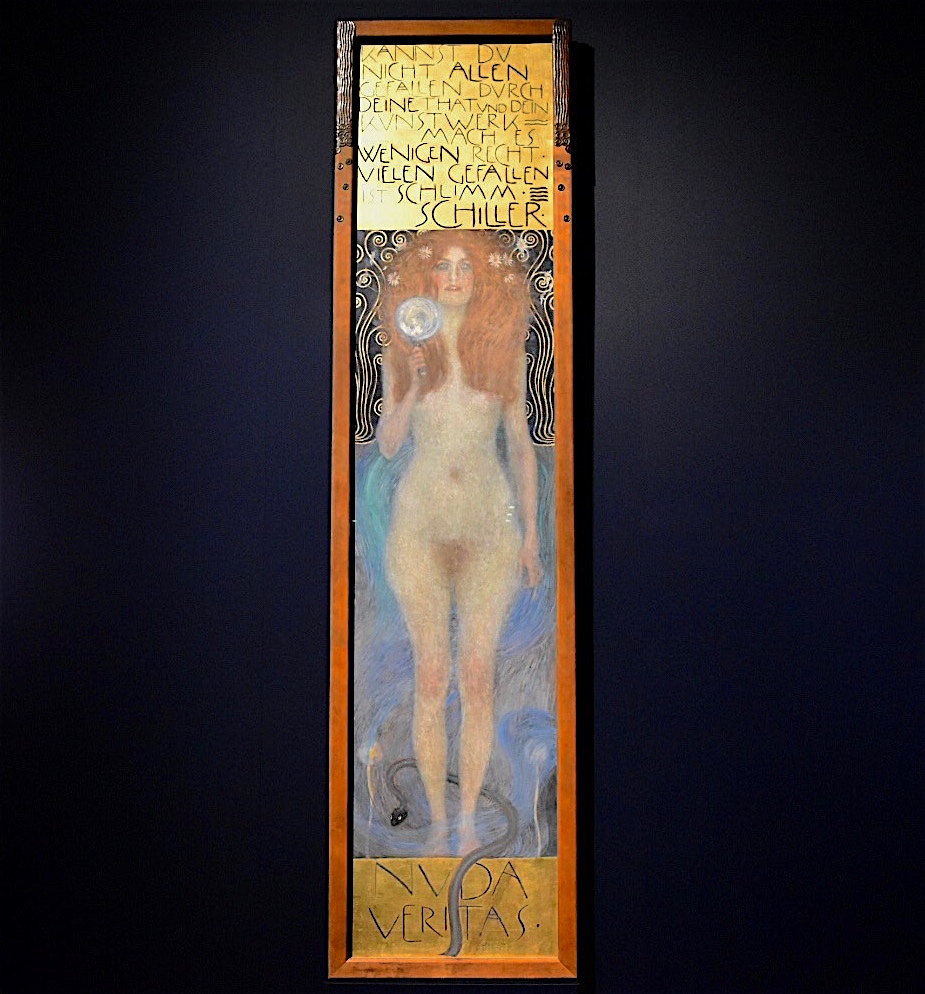
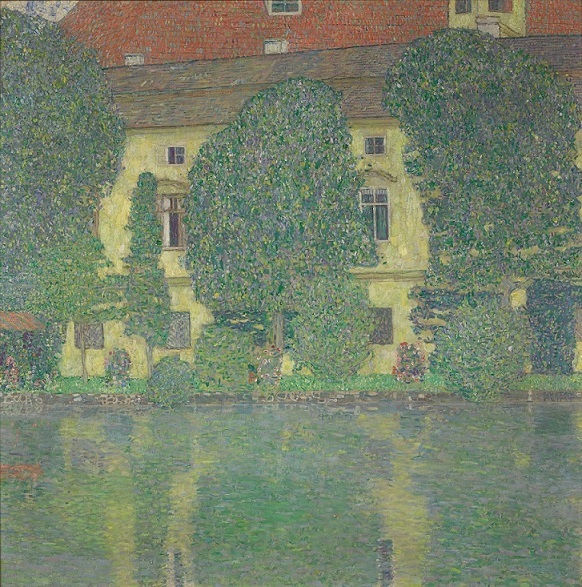
* esprit critique
It ain’t be true. I am at a loss for words. Painful though parting be, I bow to you as I see you off to distant clouds over Brazil, or Italy.
Thank you for that amazing sentence, review. 「日本で最も優れた油彩を制作する画家の一人、いや唯一の一人」. Resta in Pace, Satoru. Troppo, troppo, presto.
I won’t forget you. One more painting, you’ll like. Promised. Ciao, ci vediamo.
